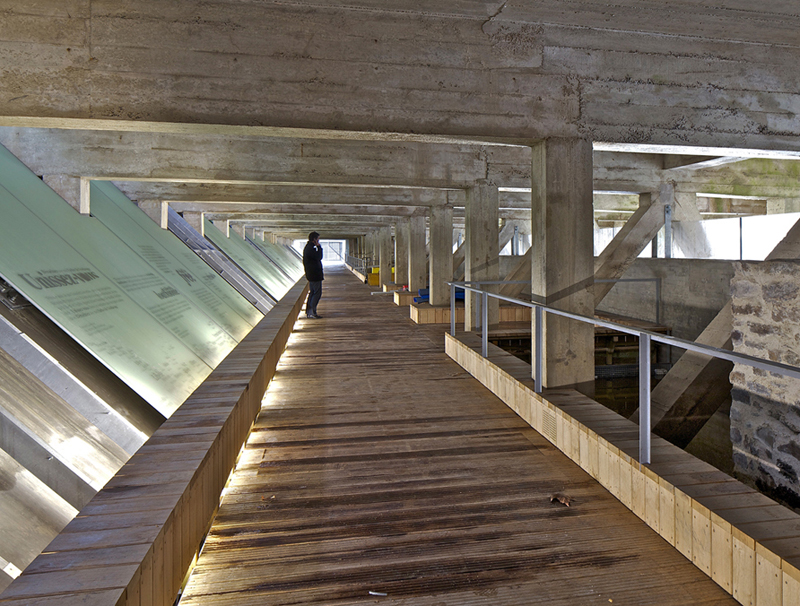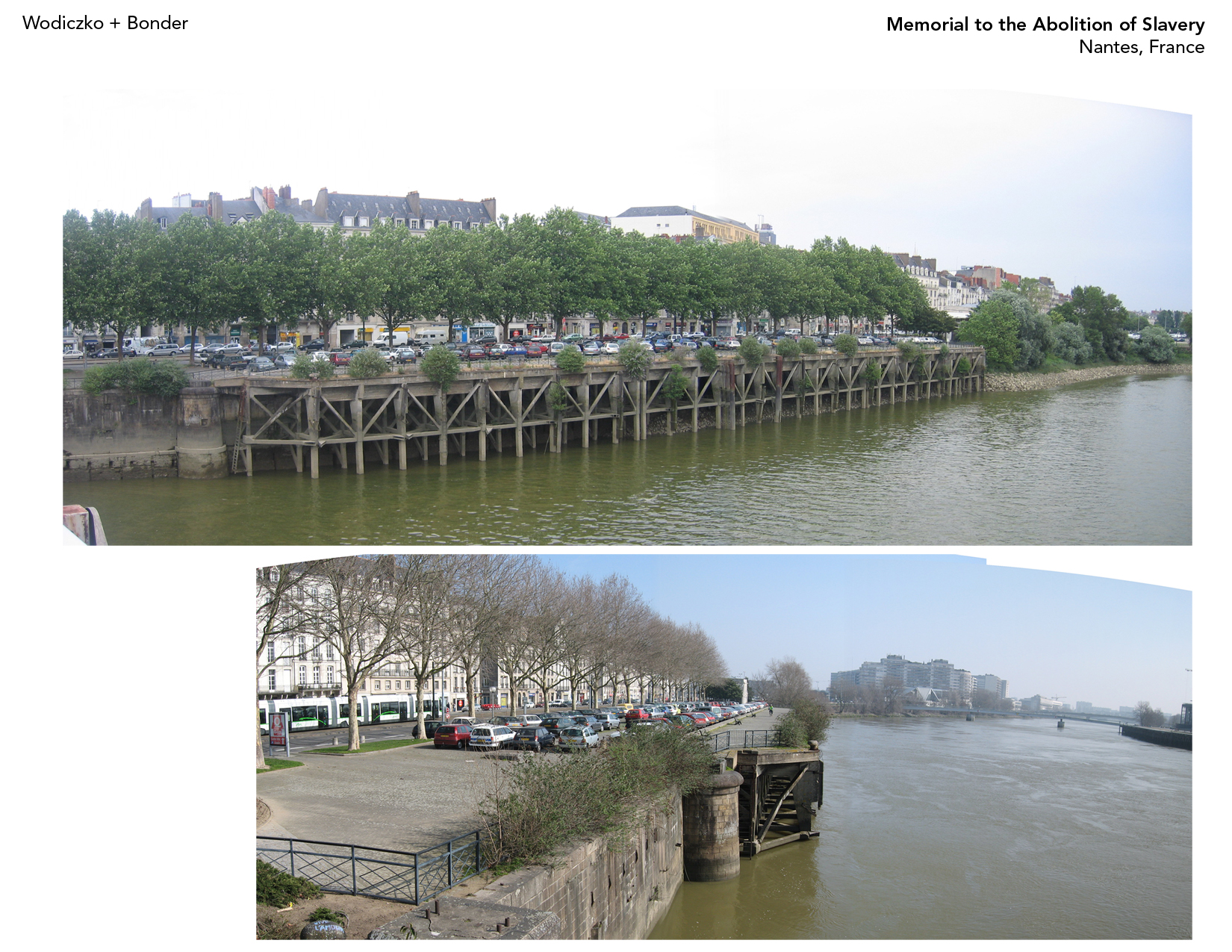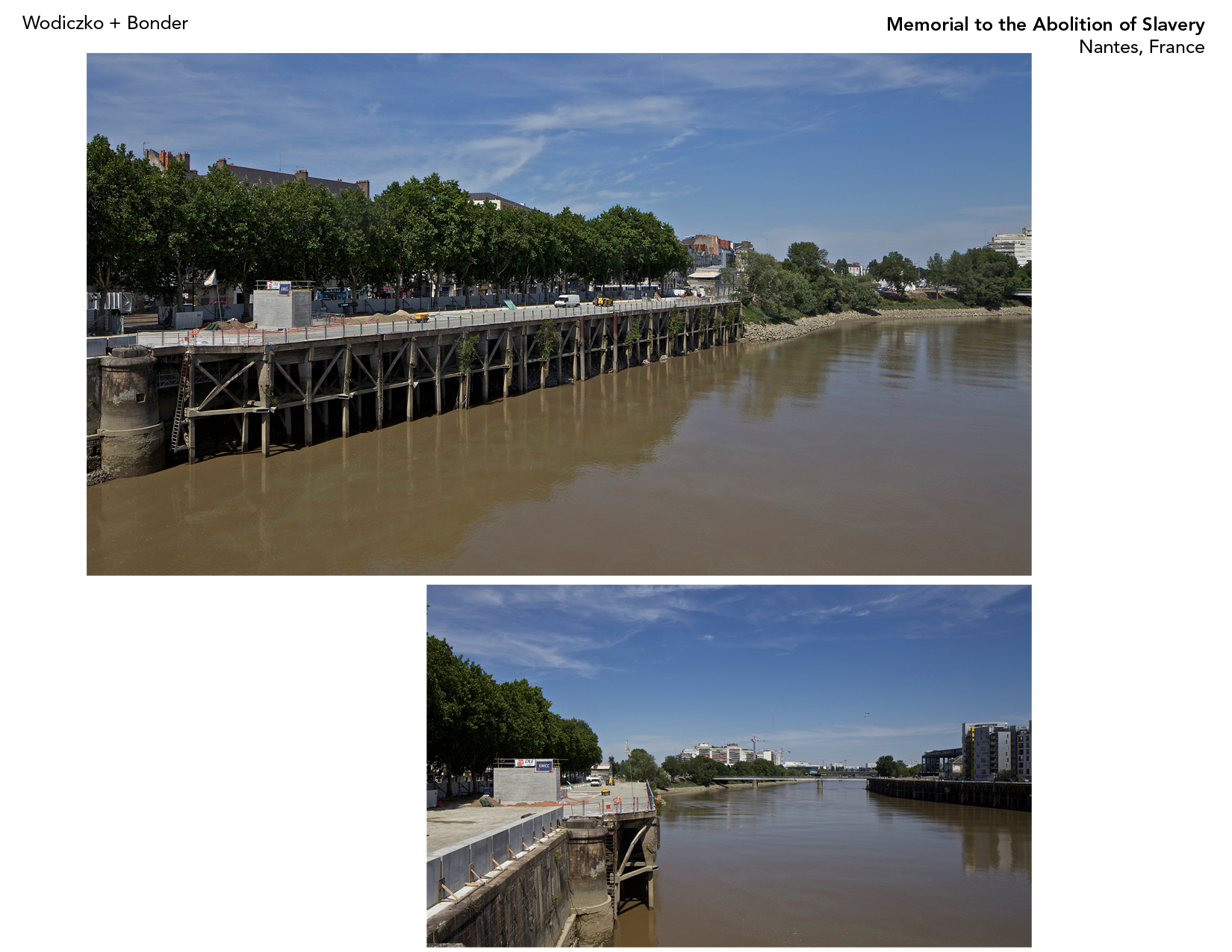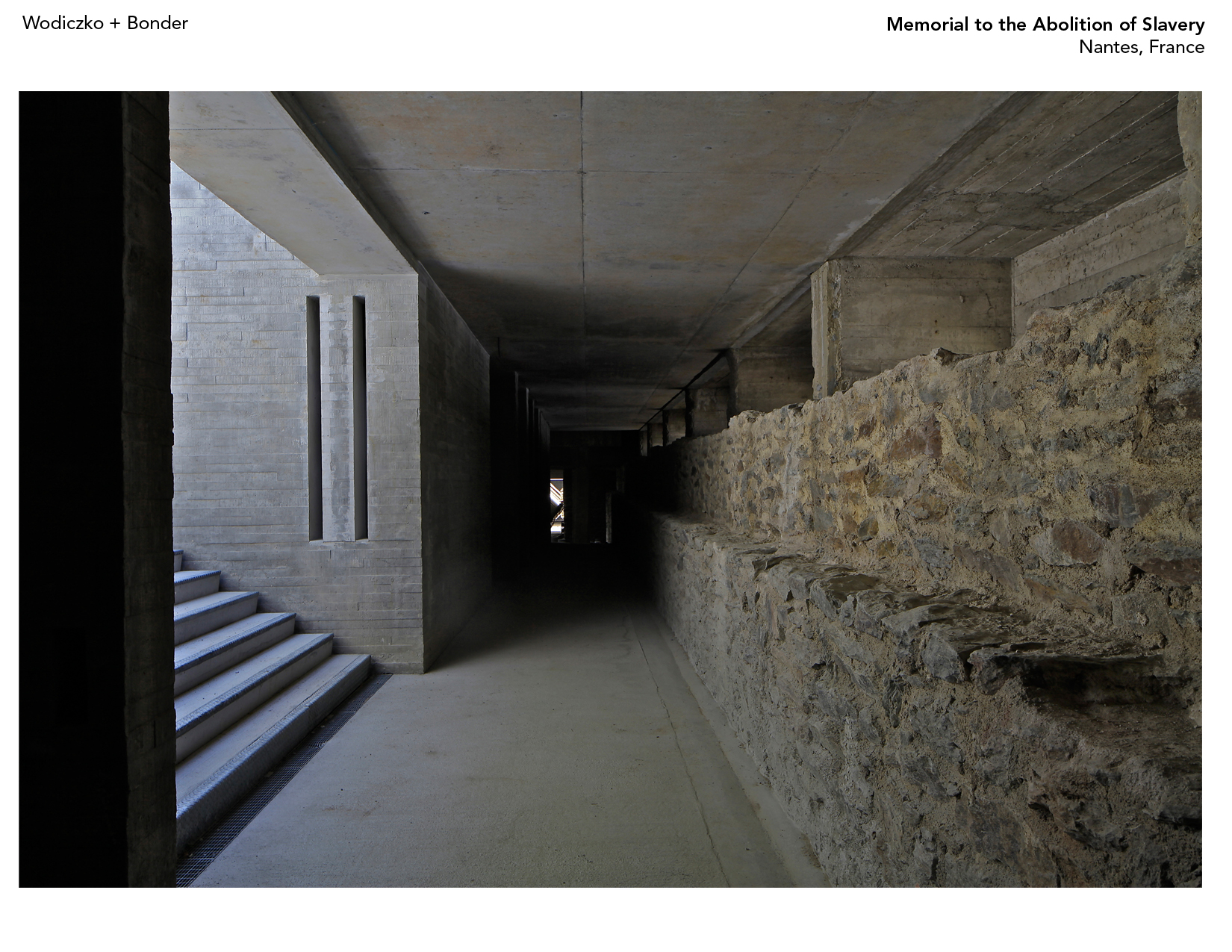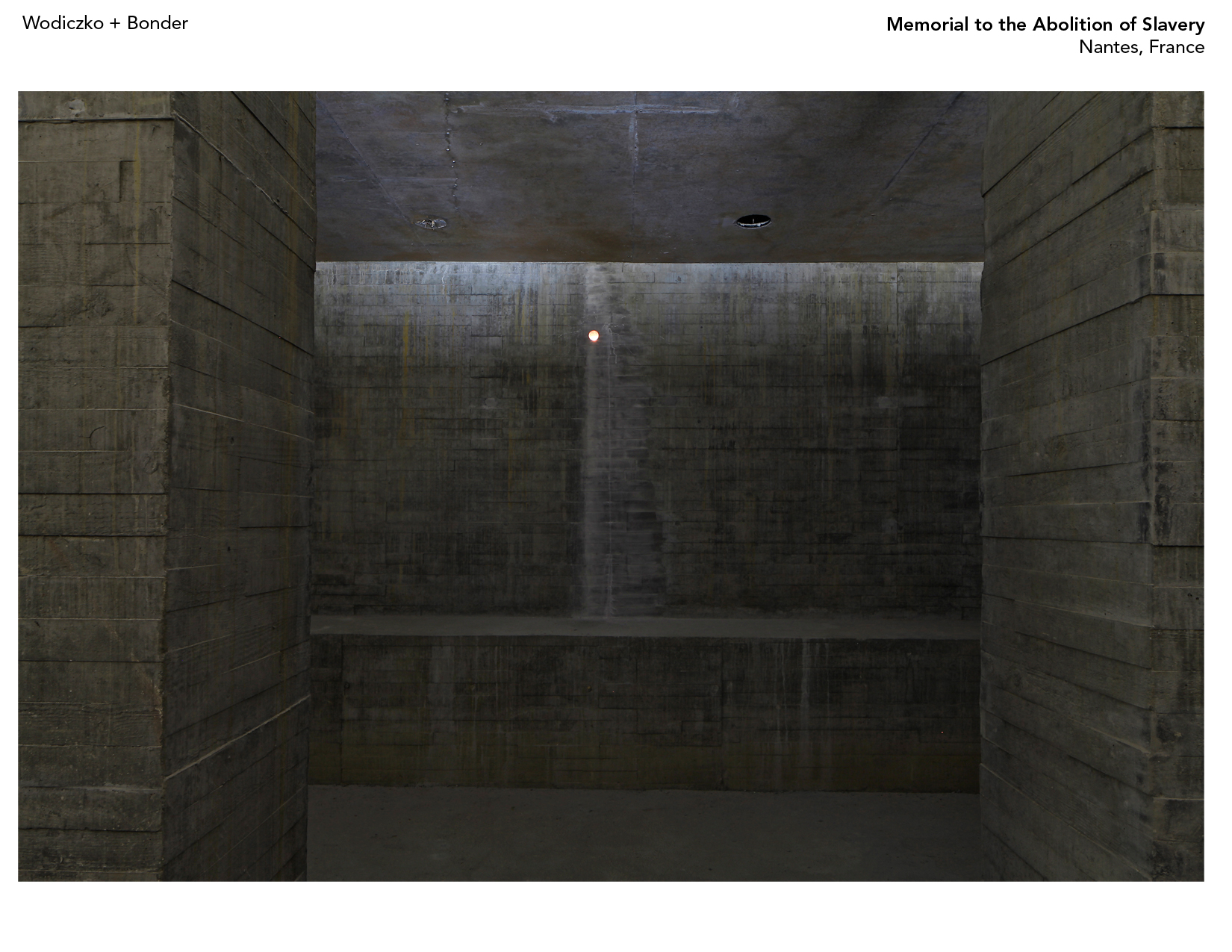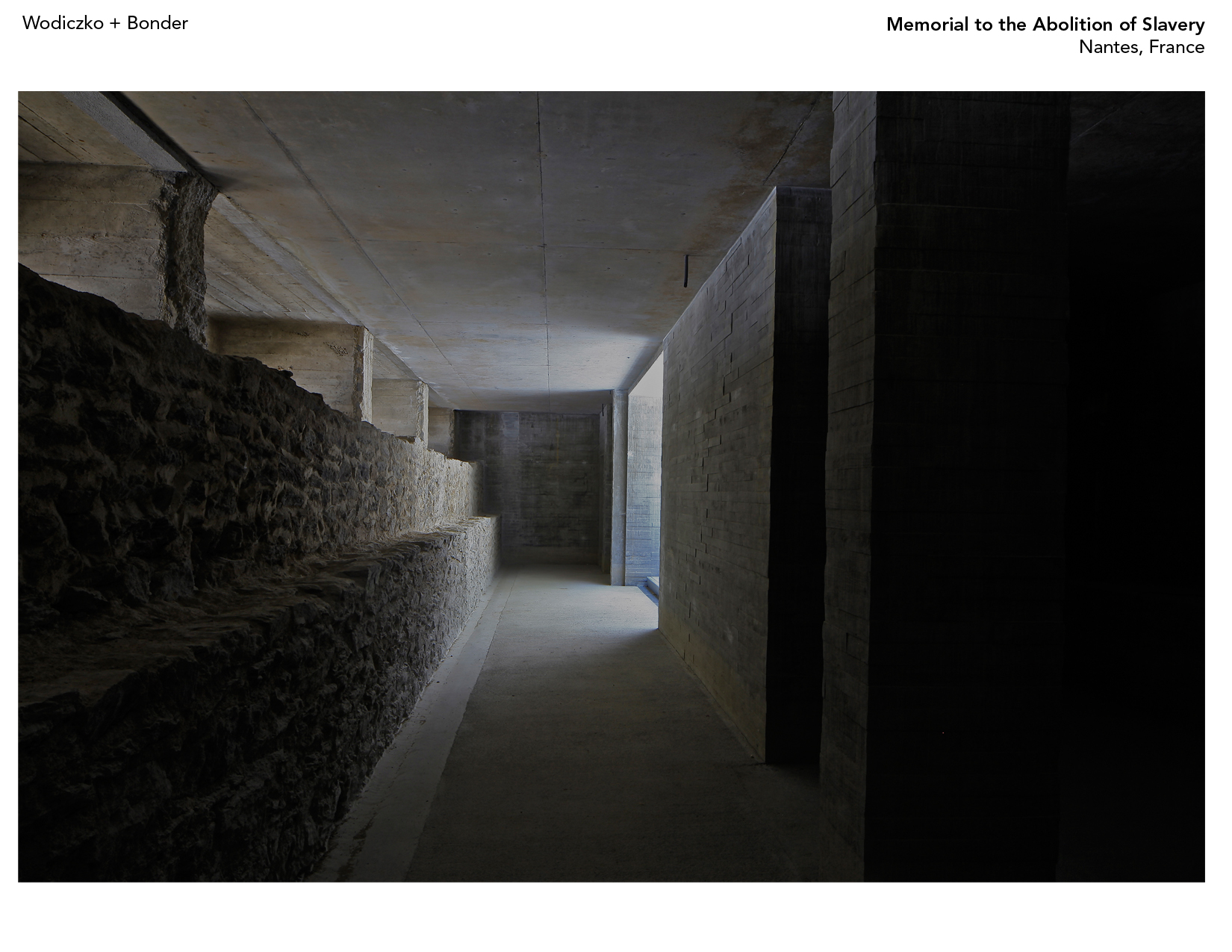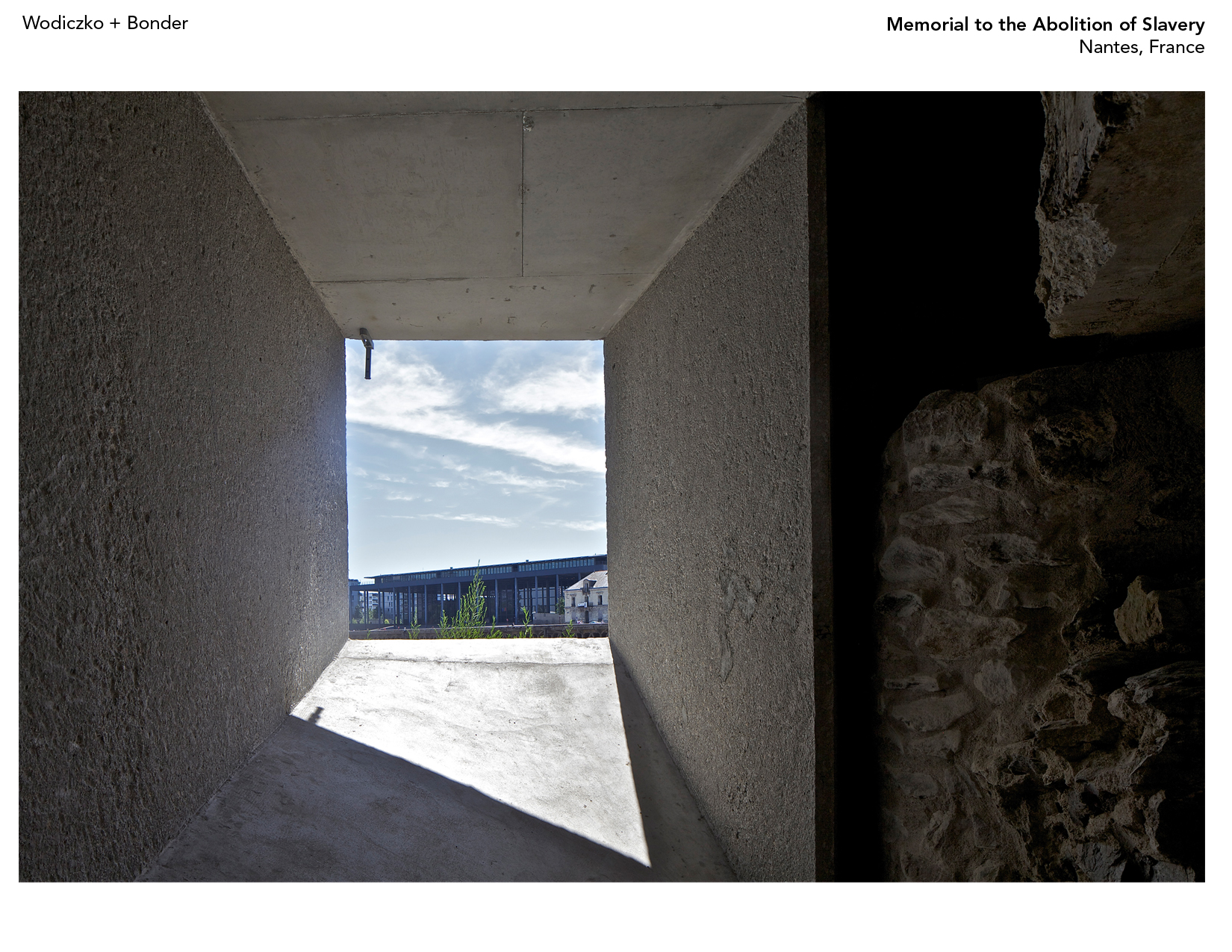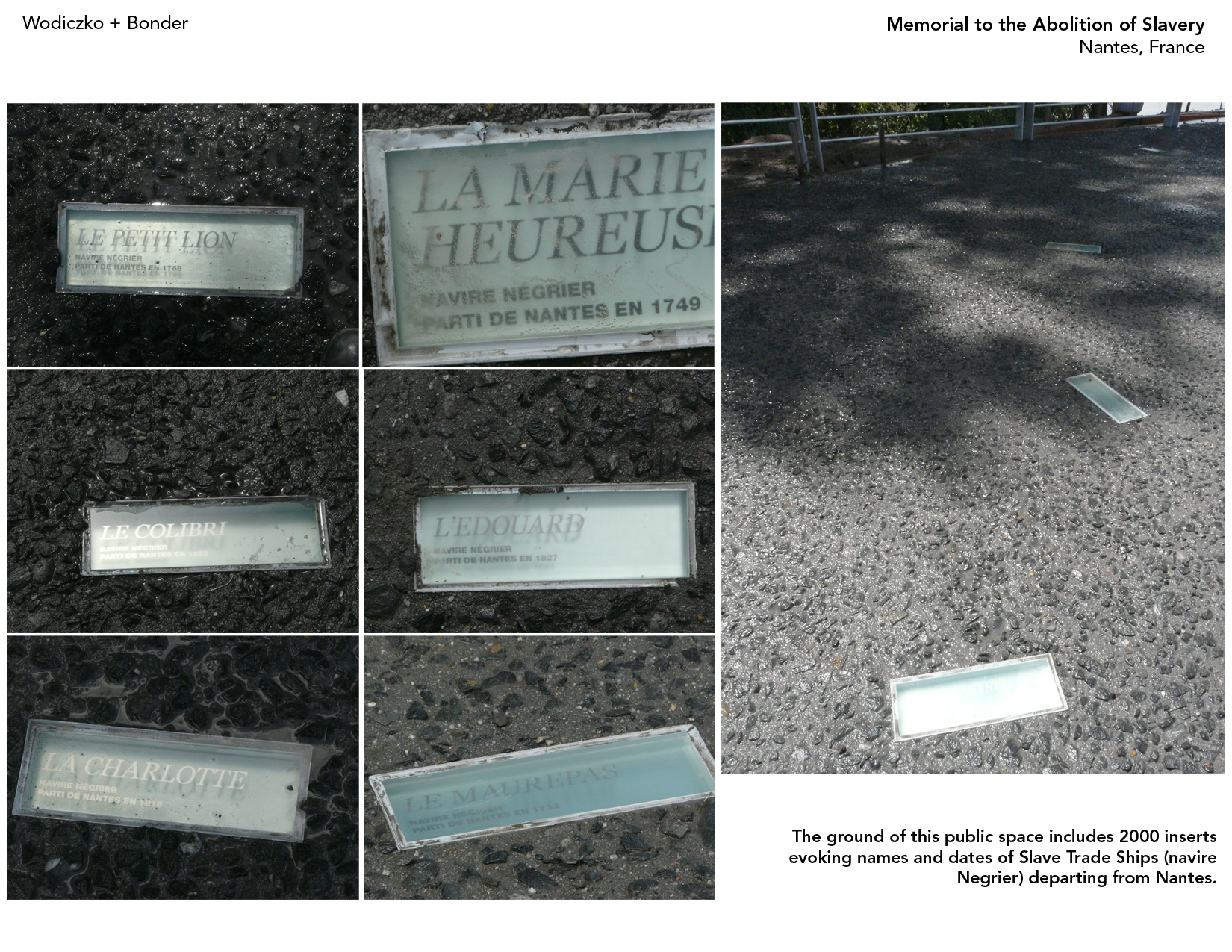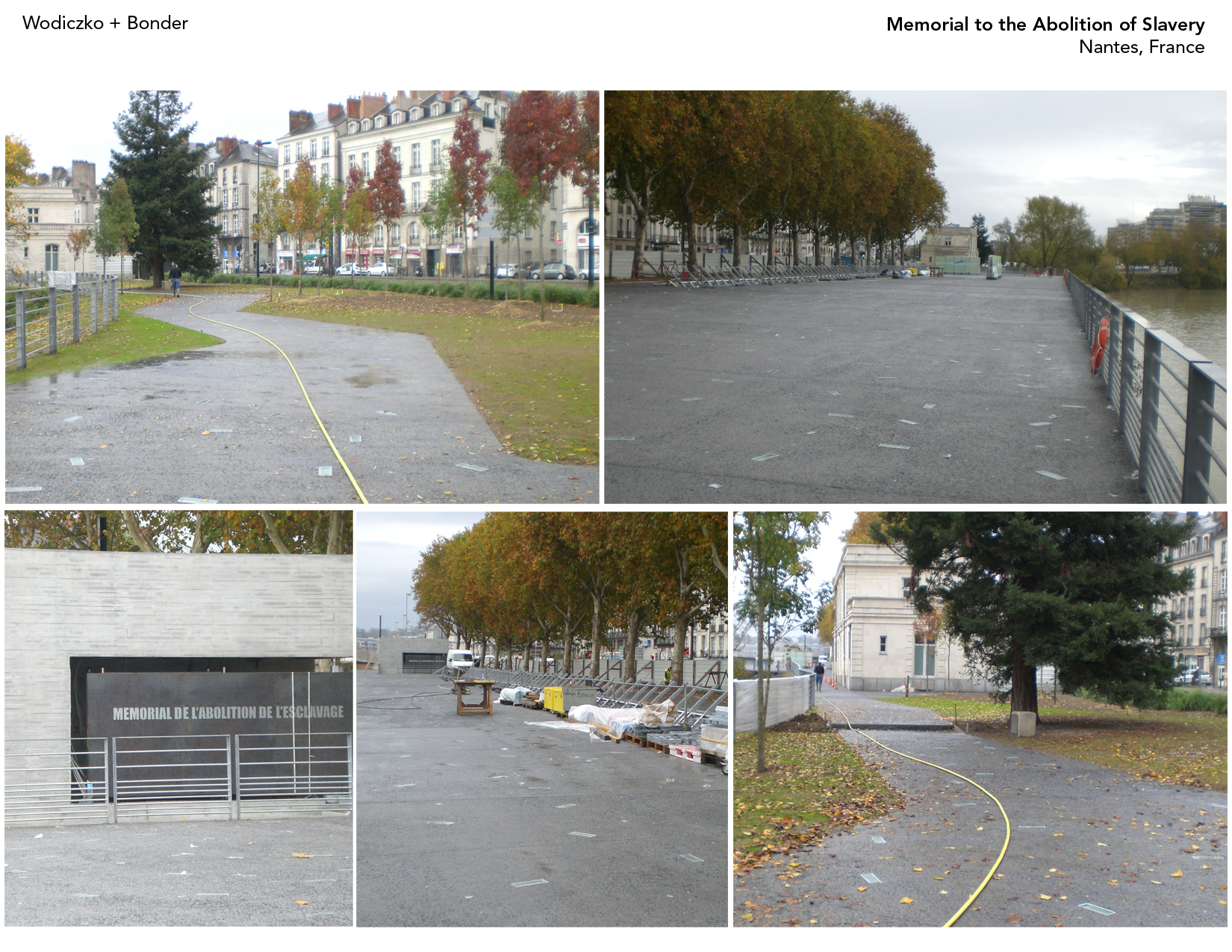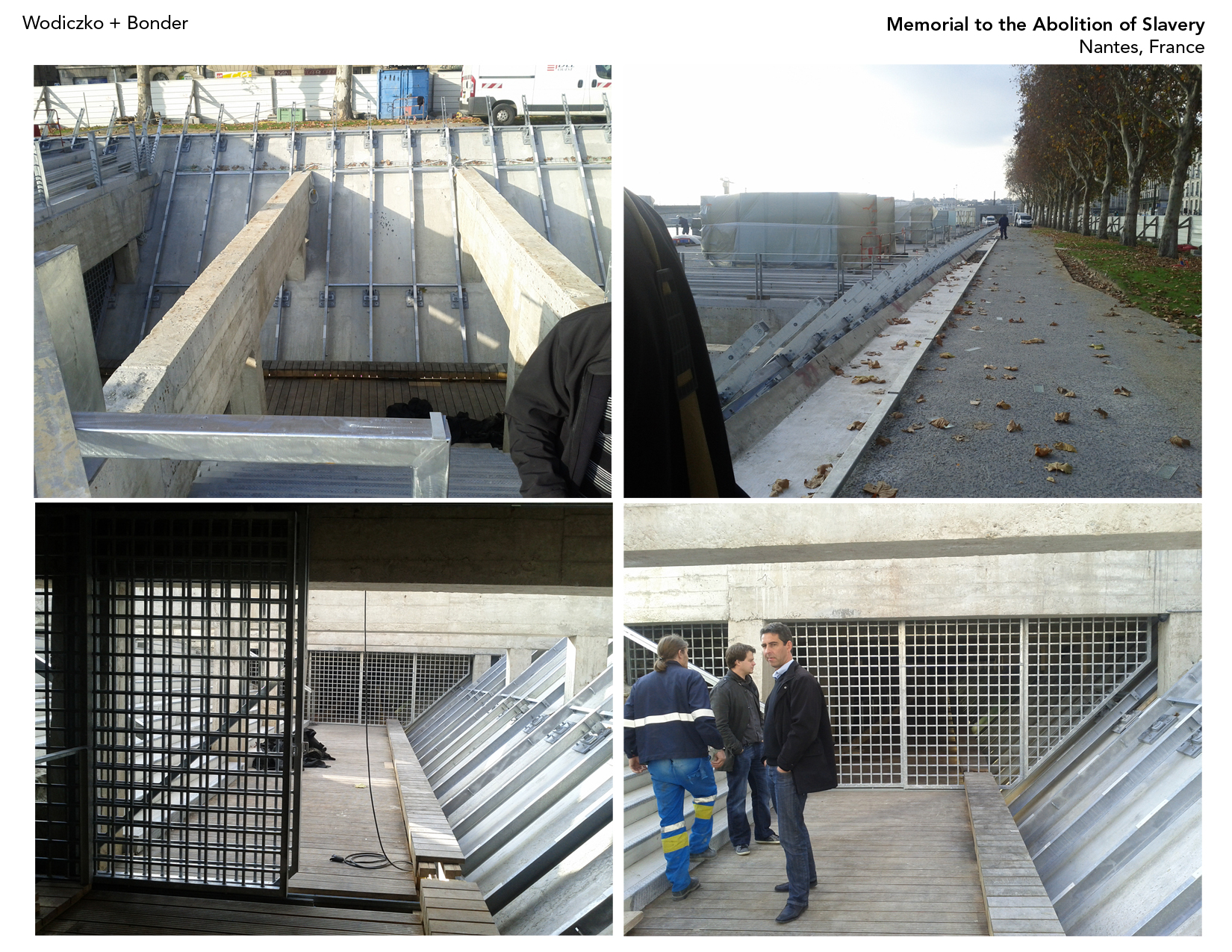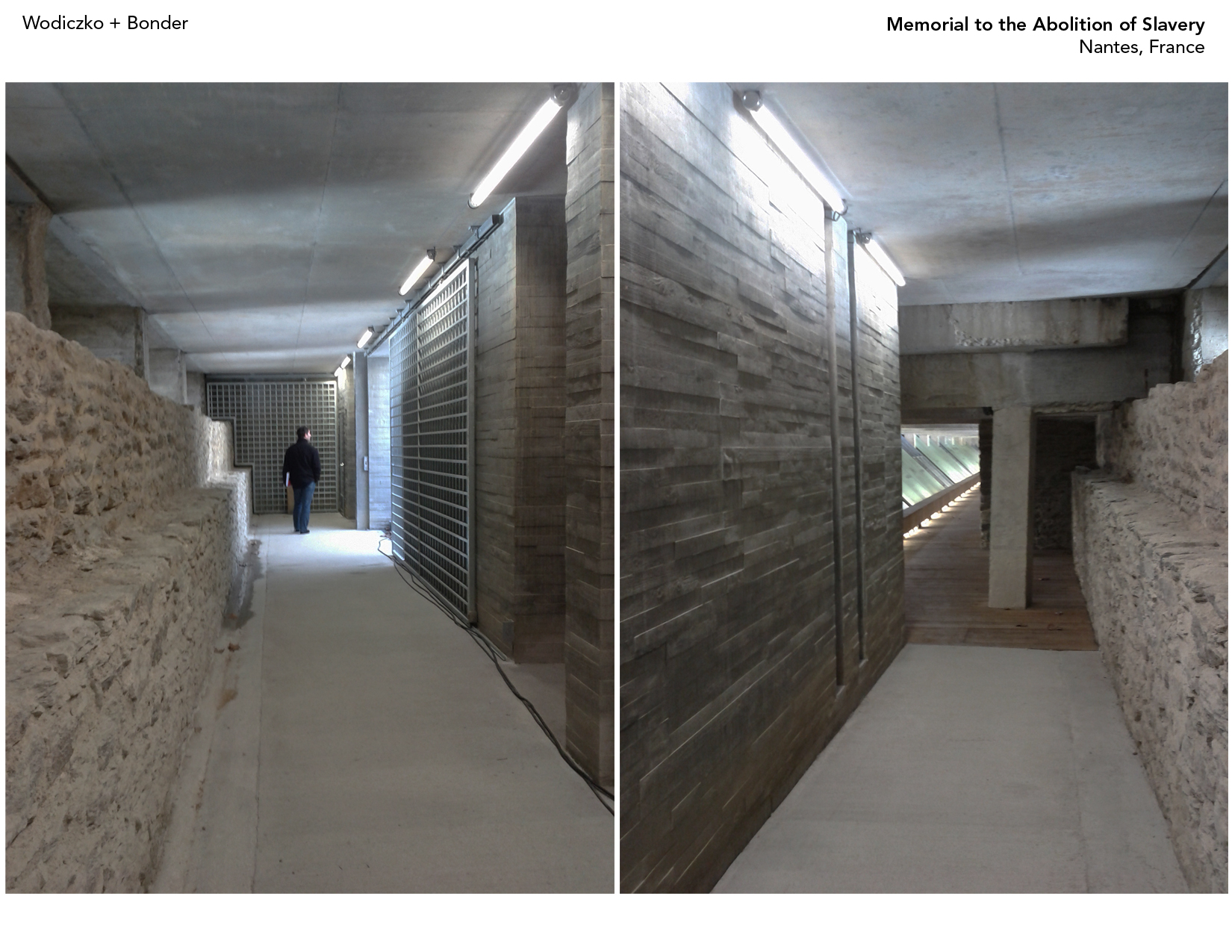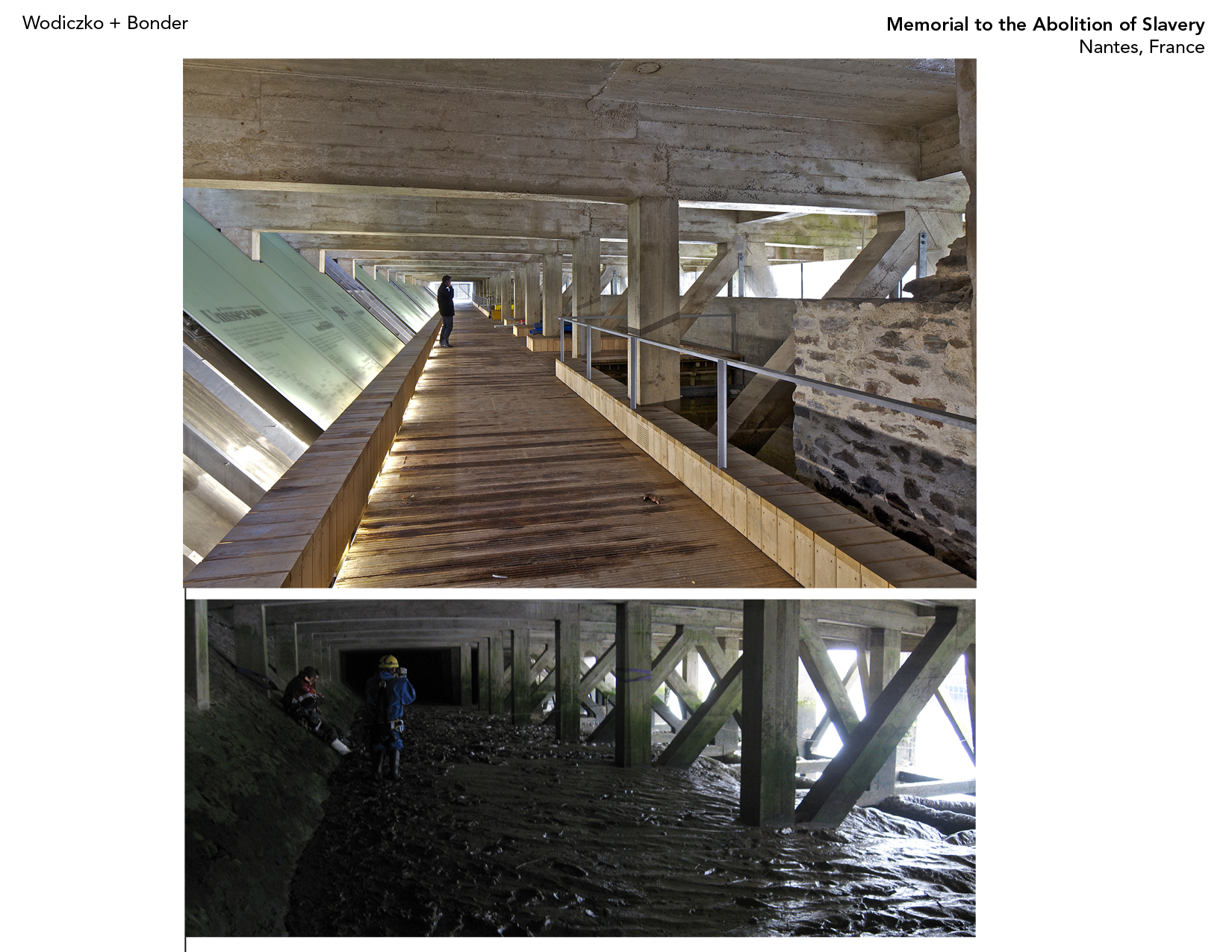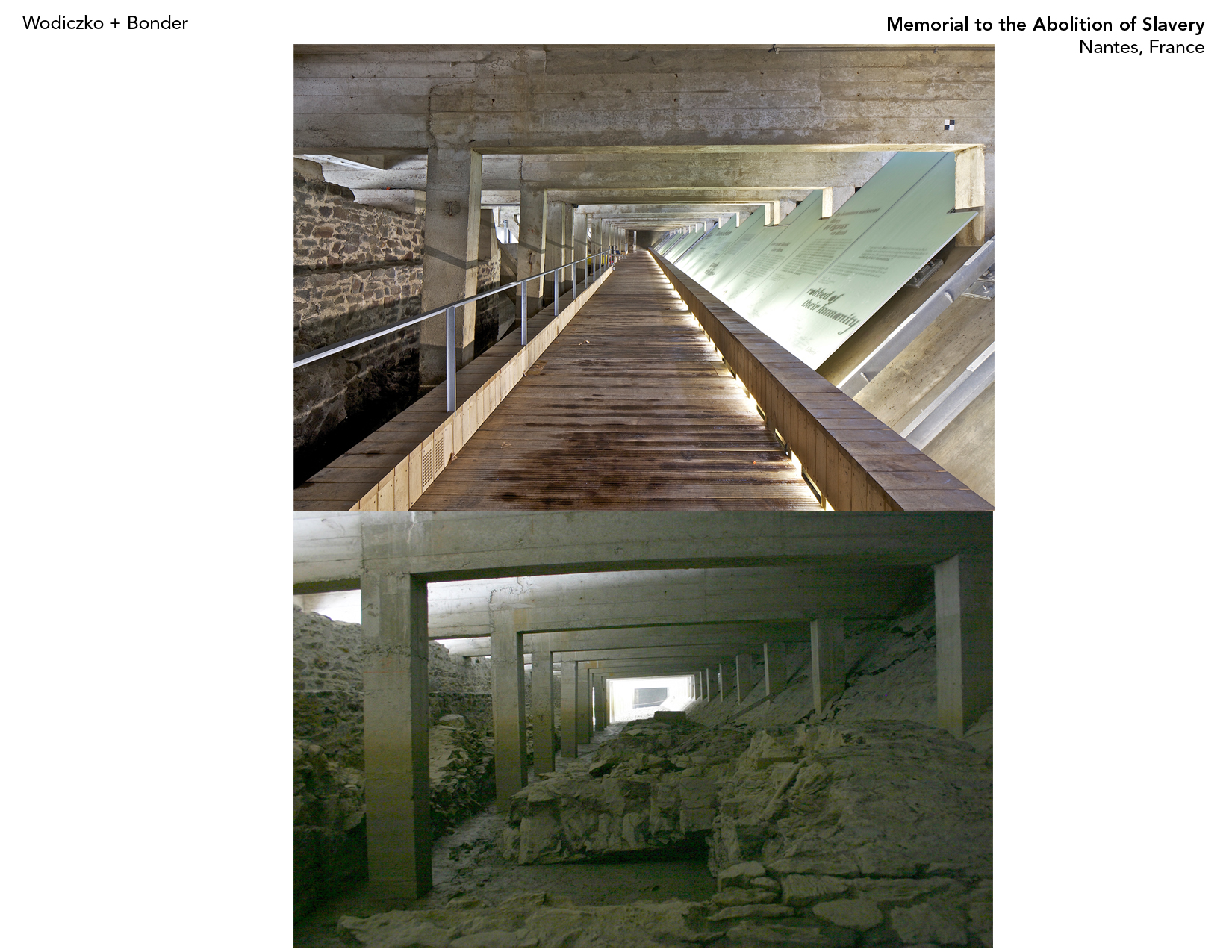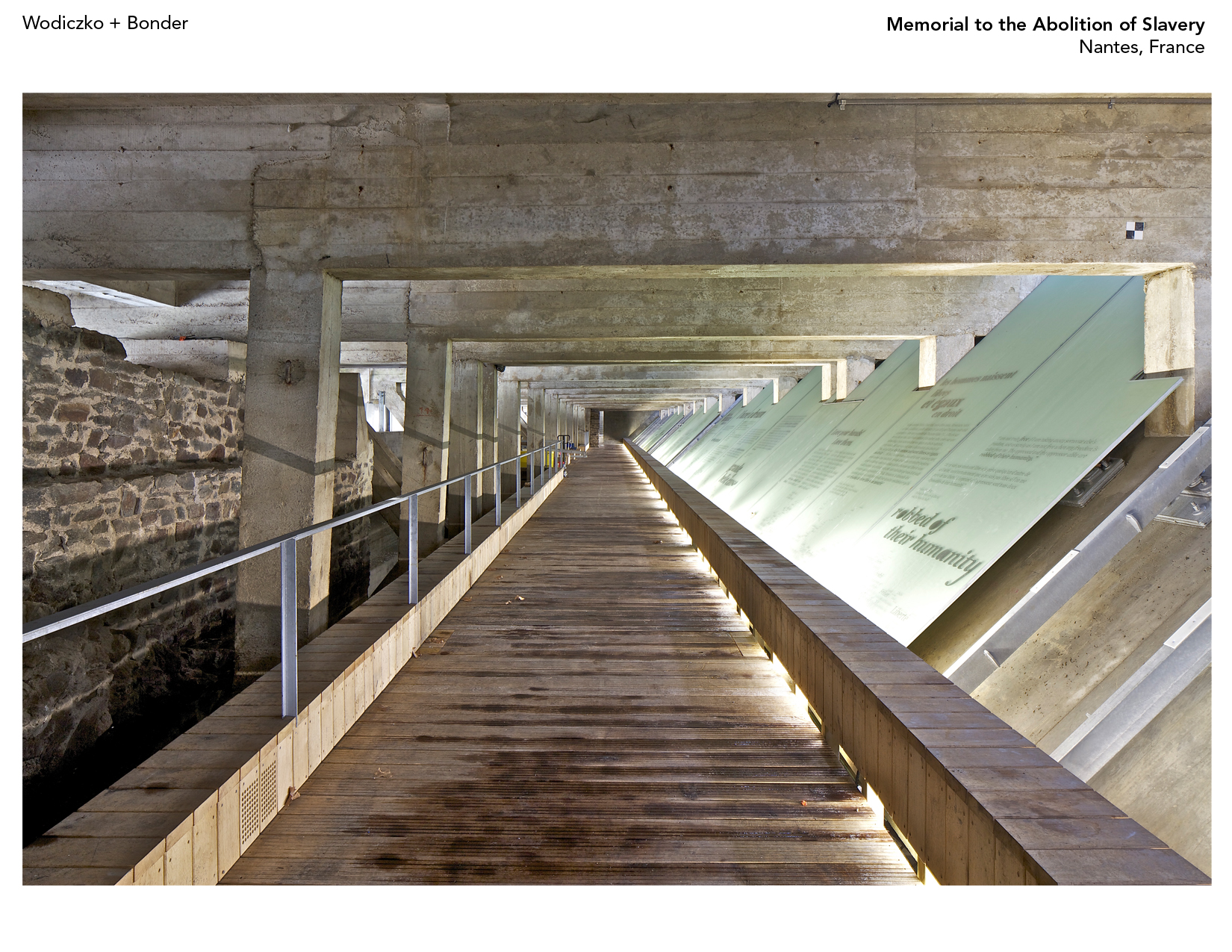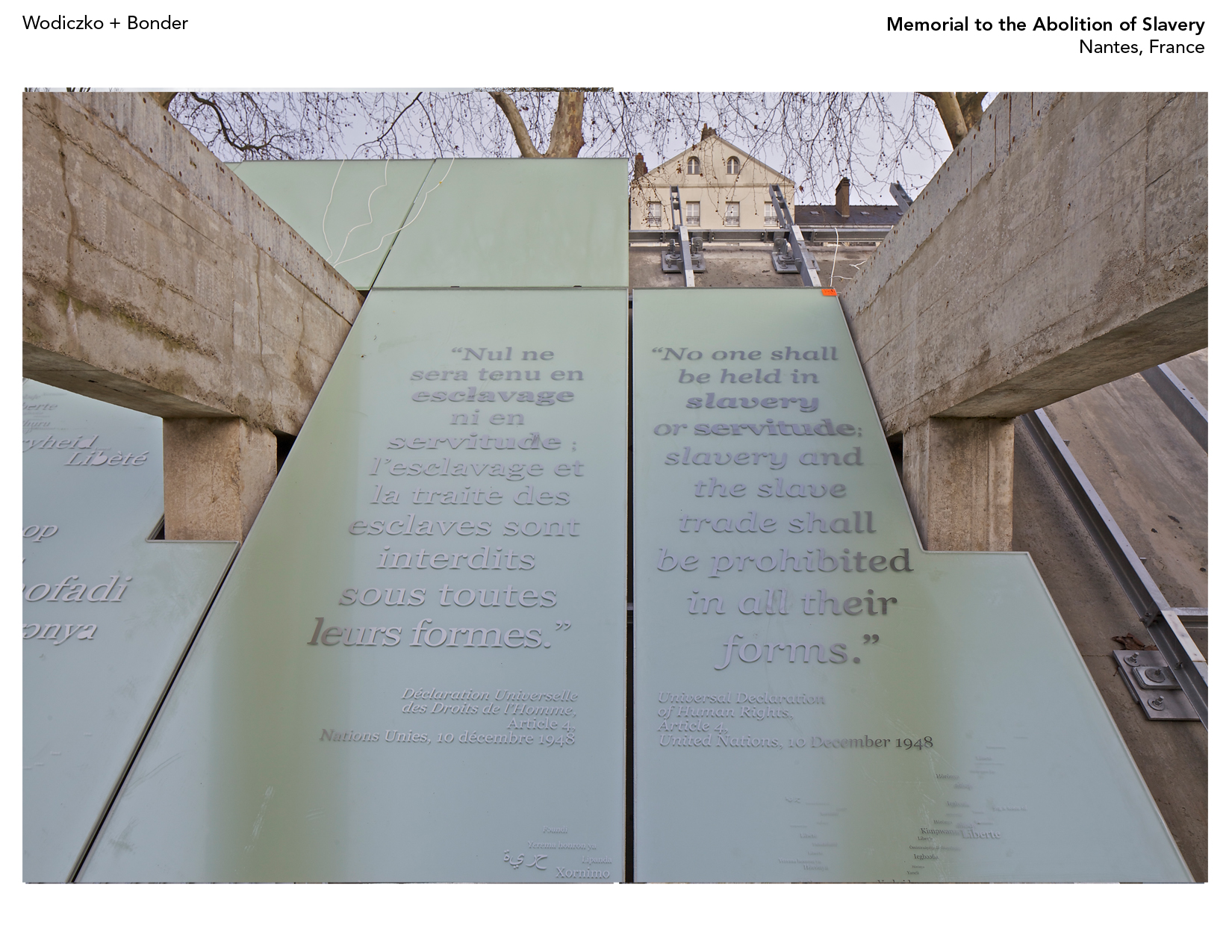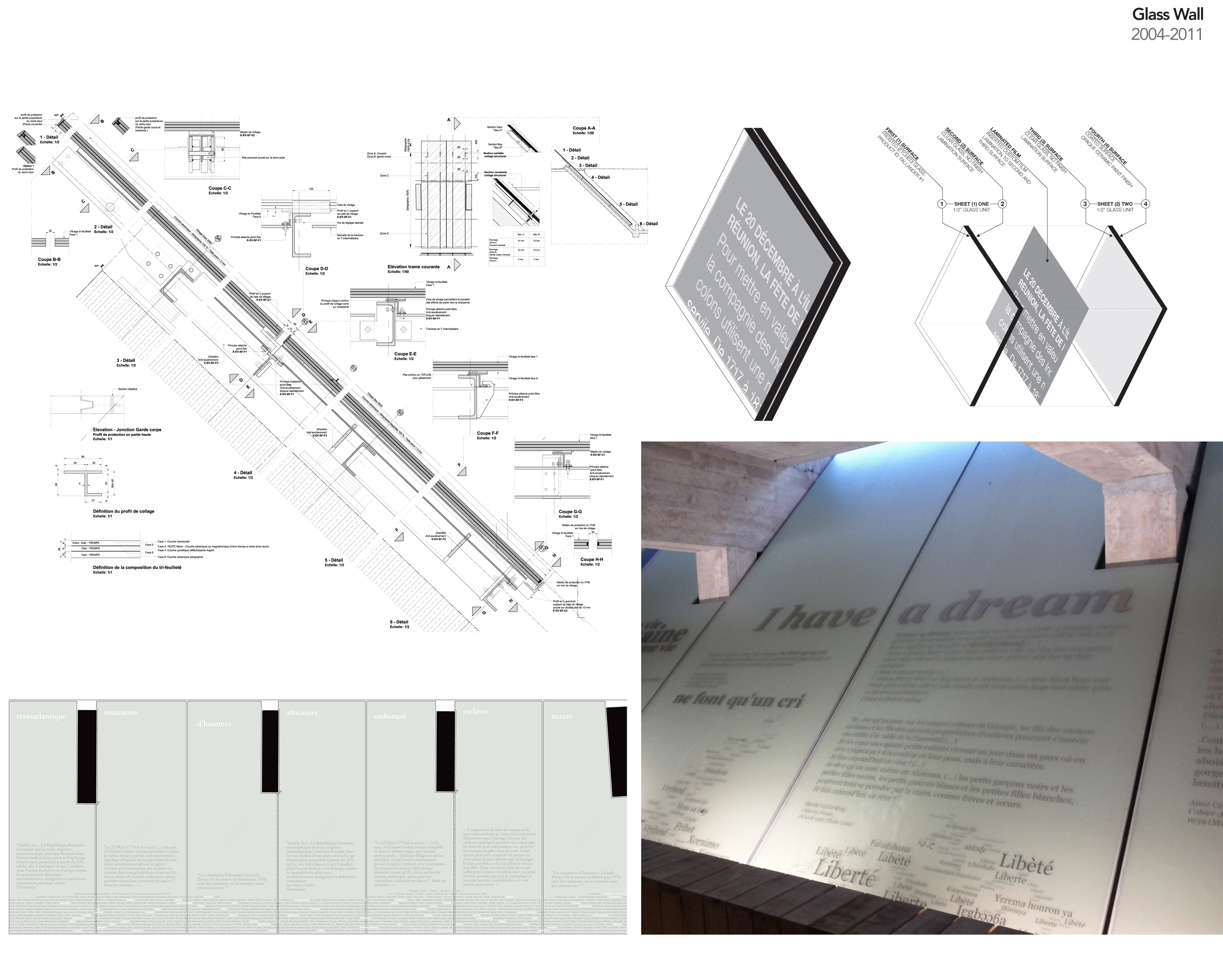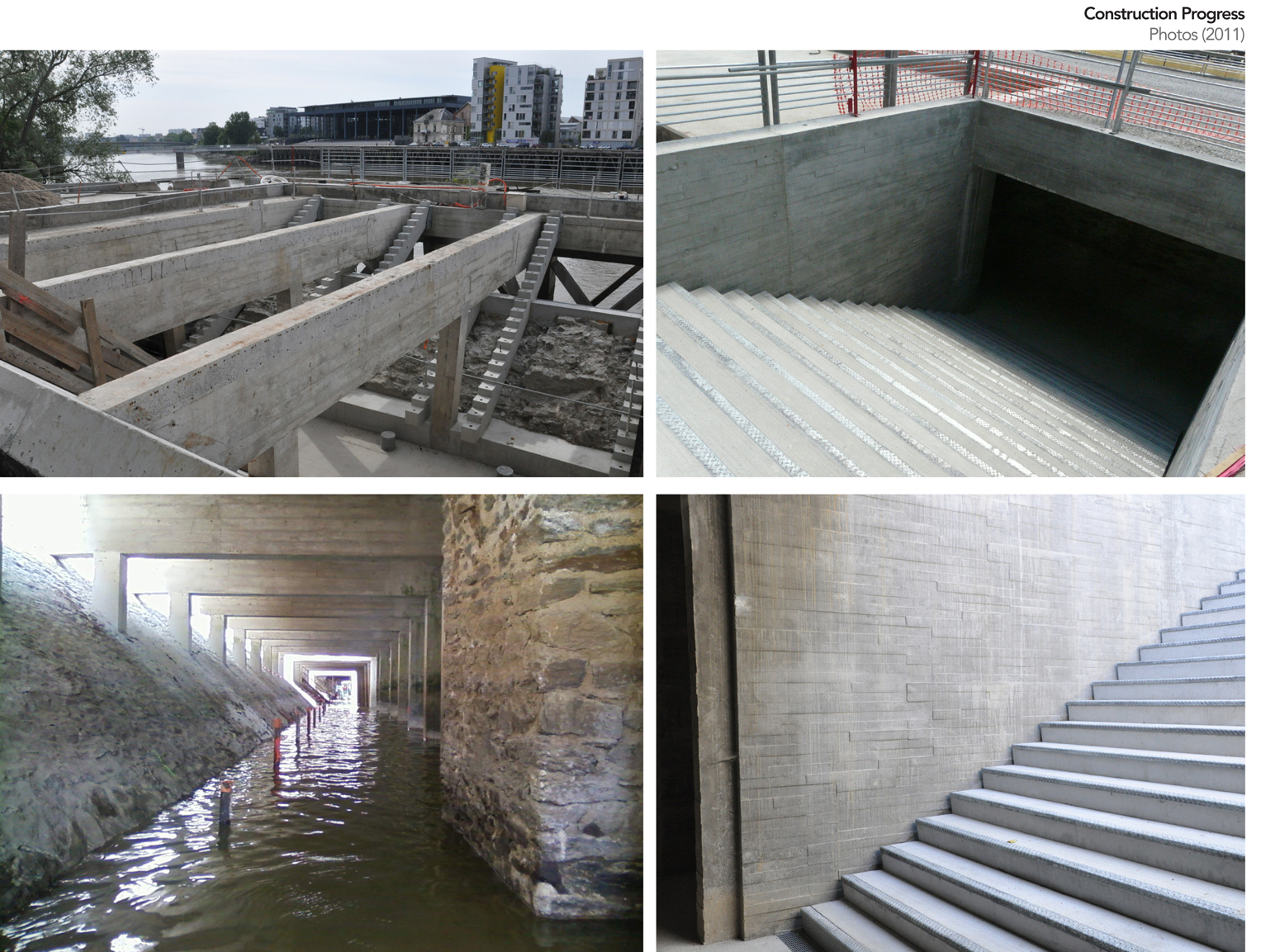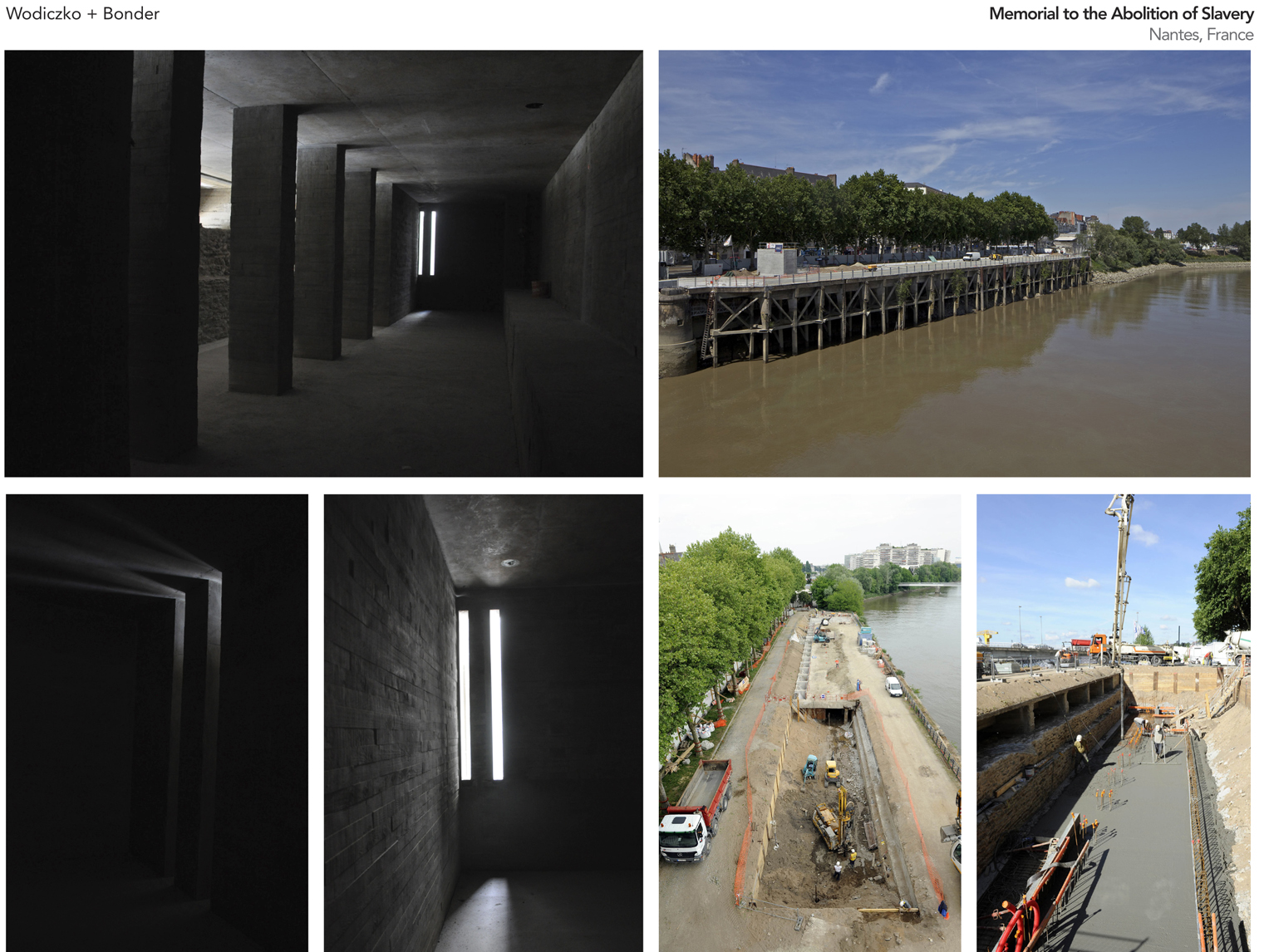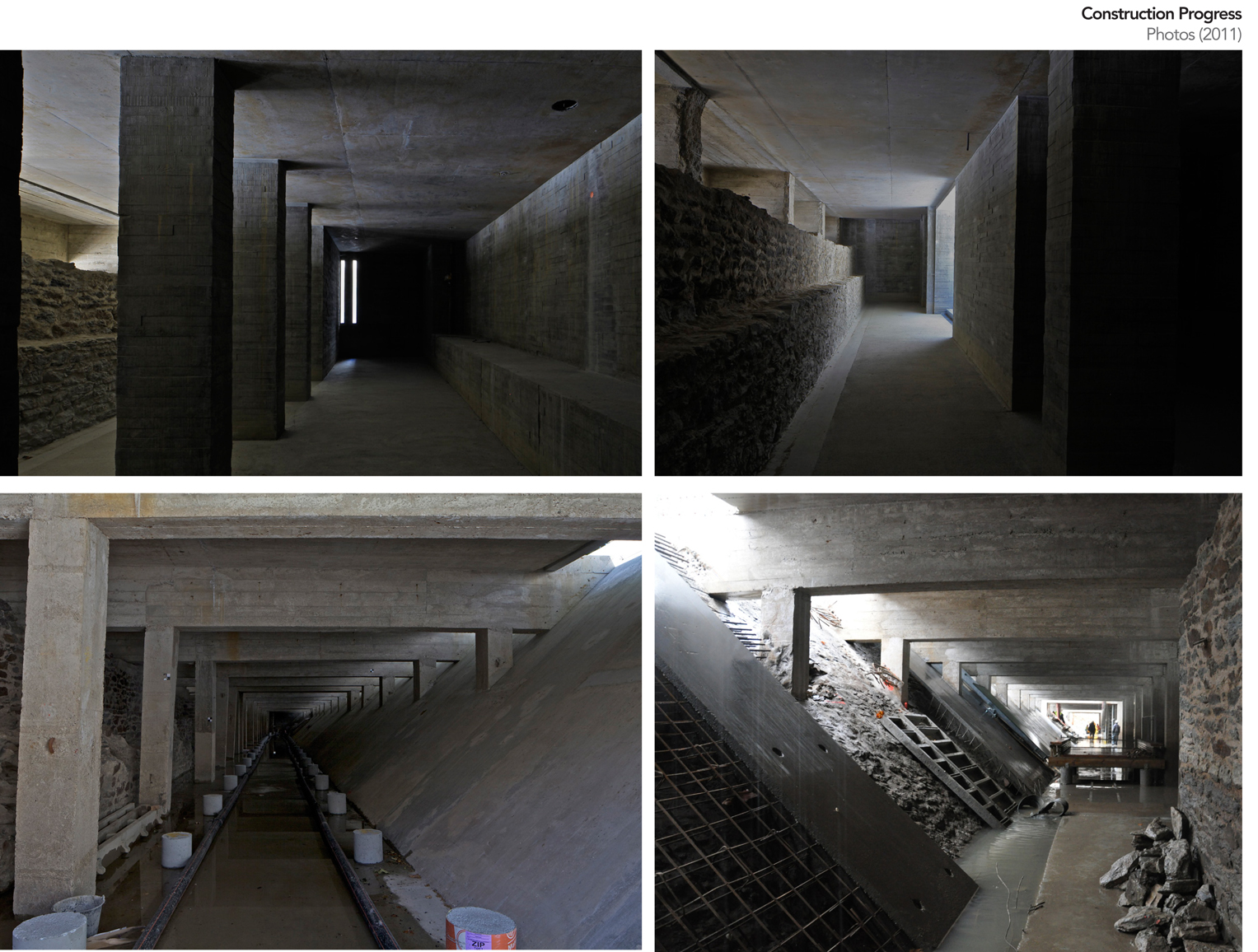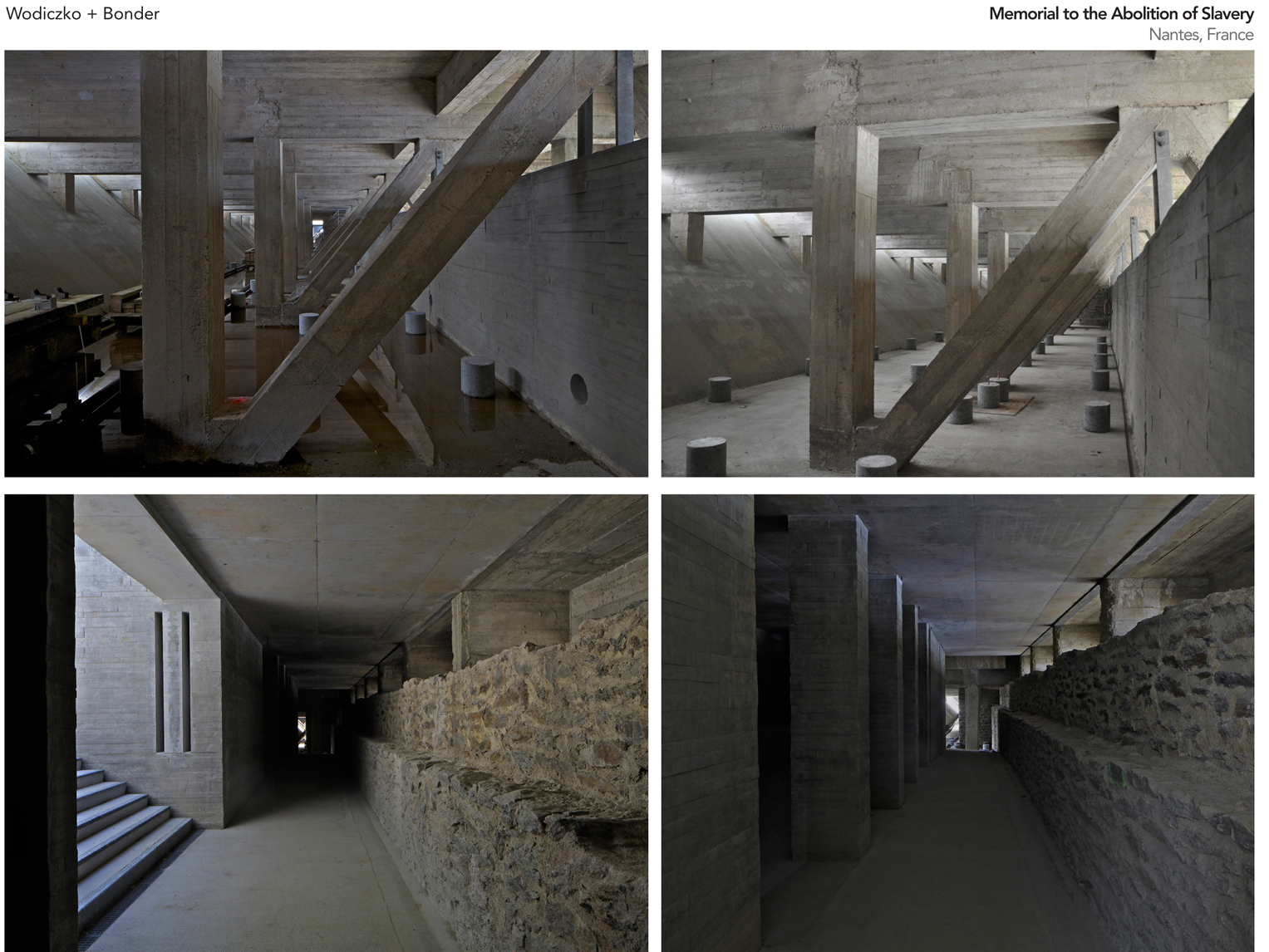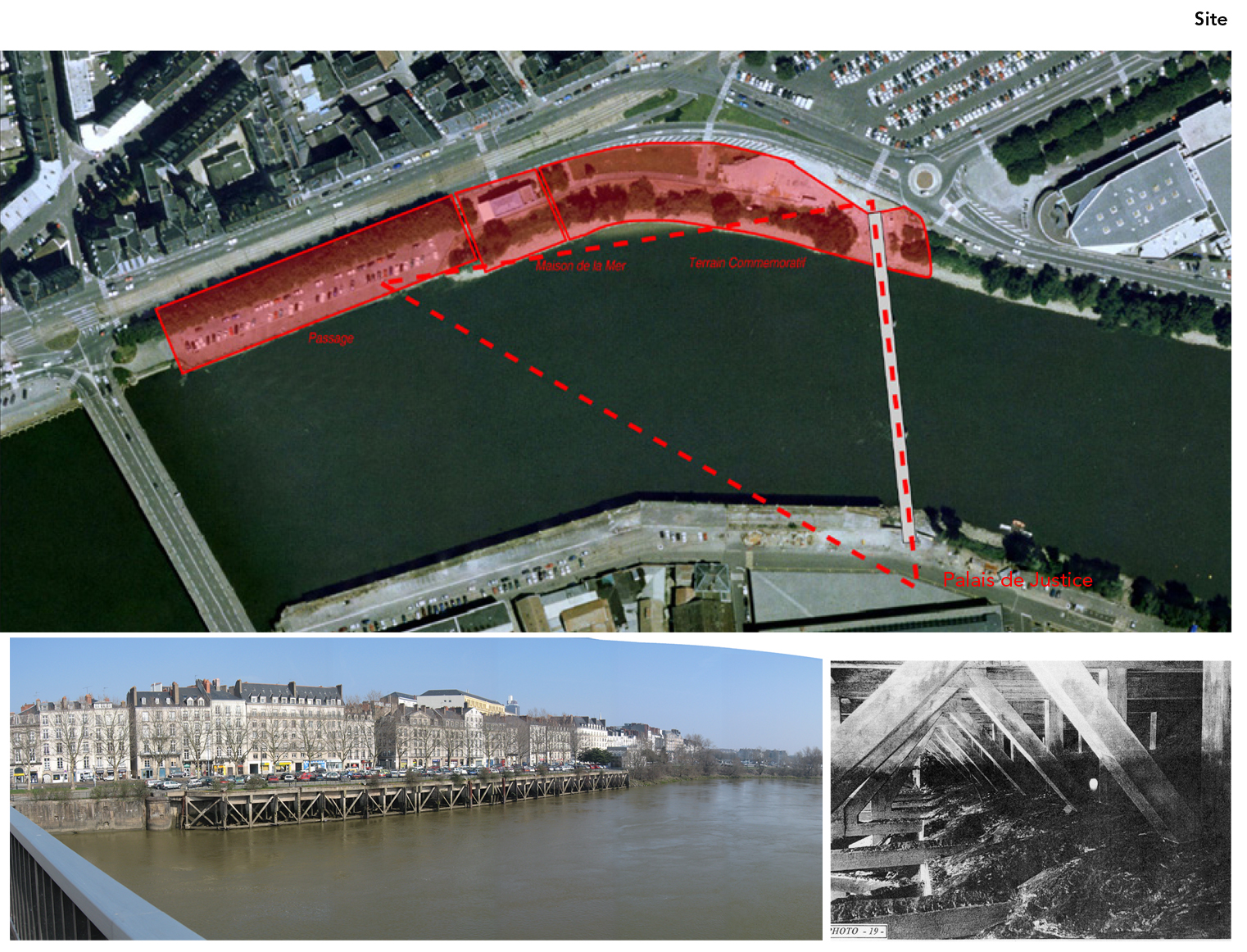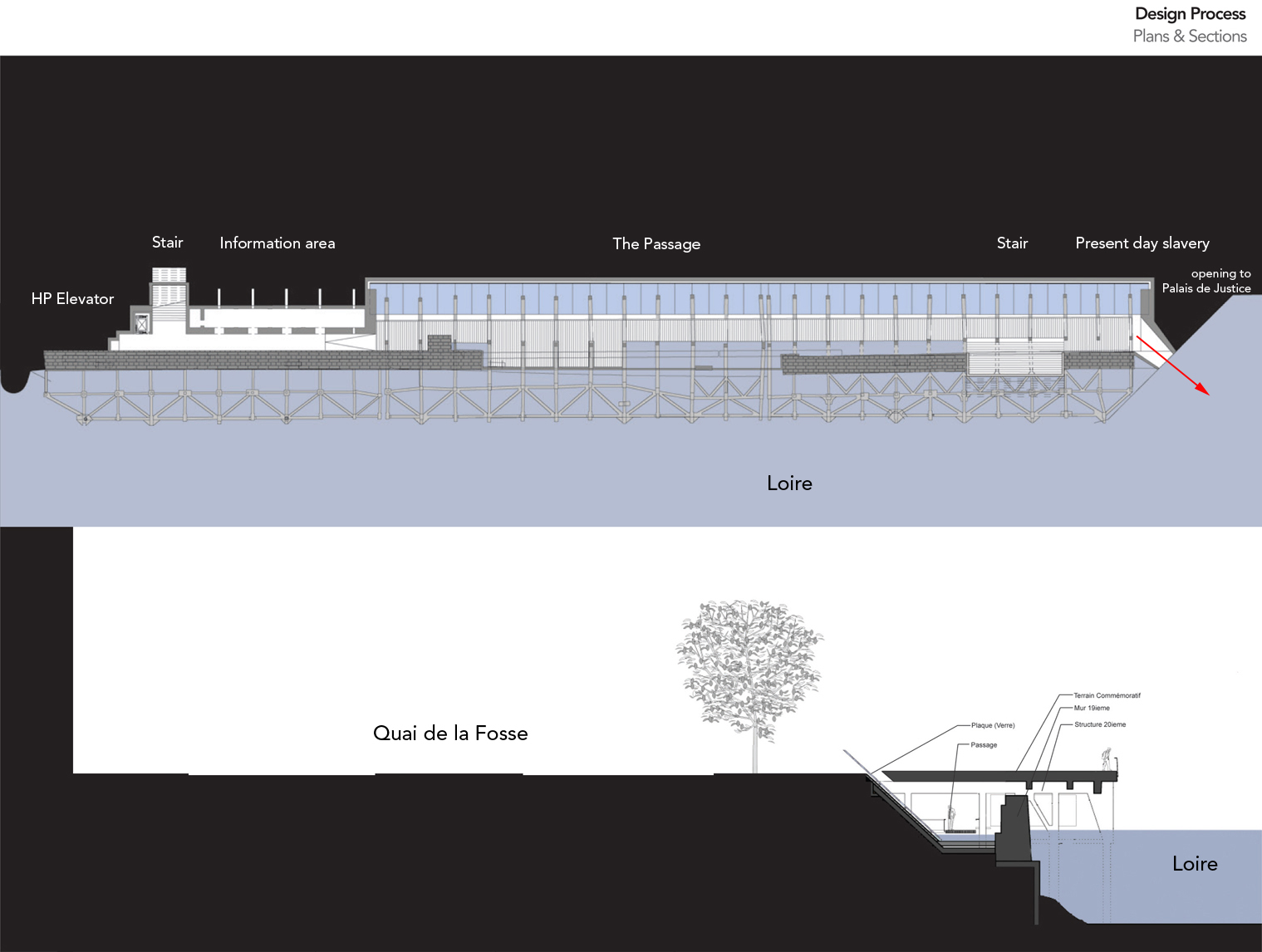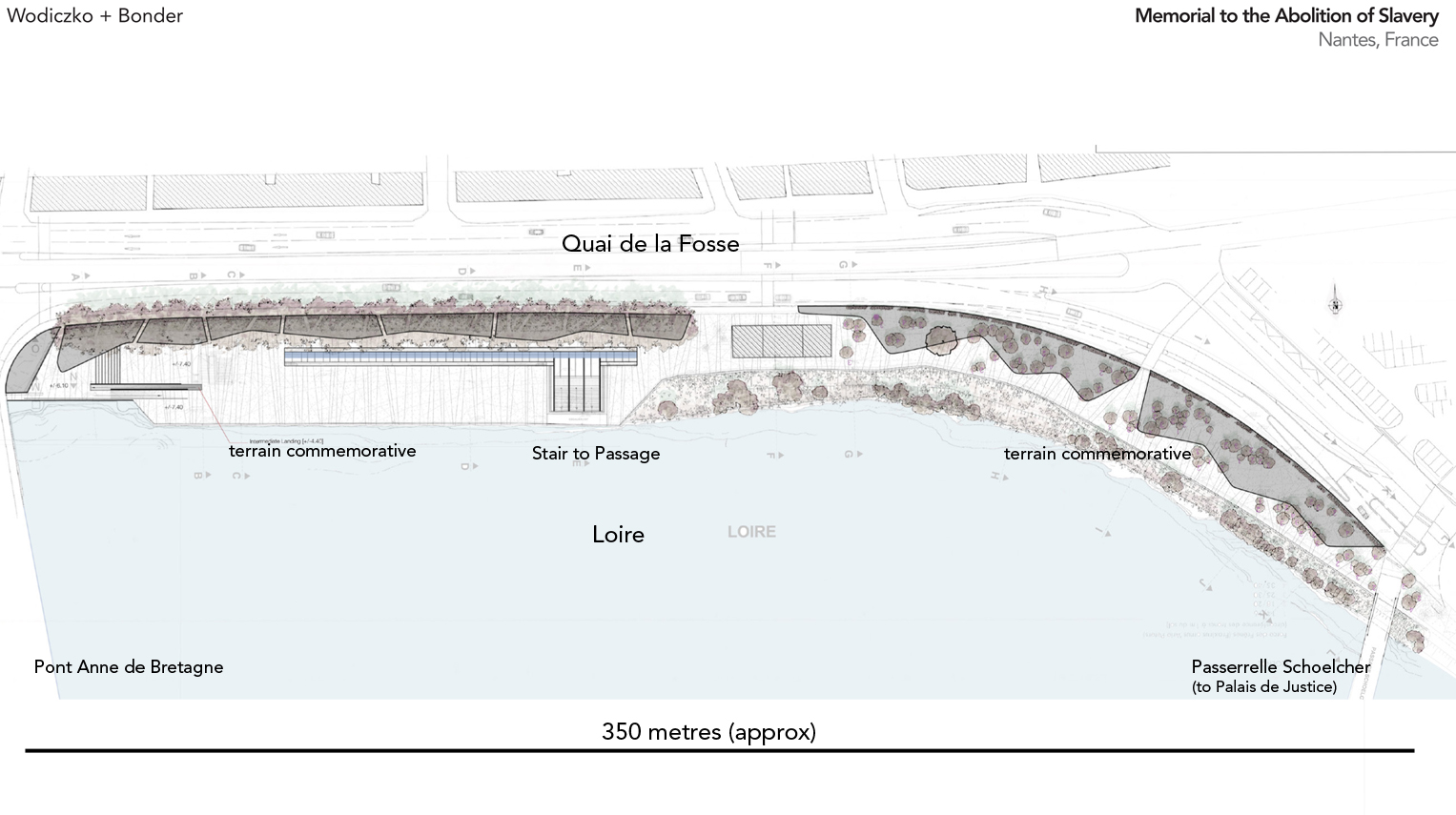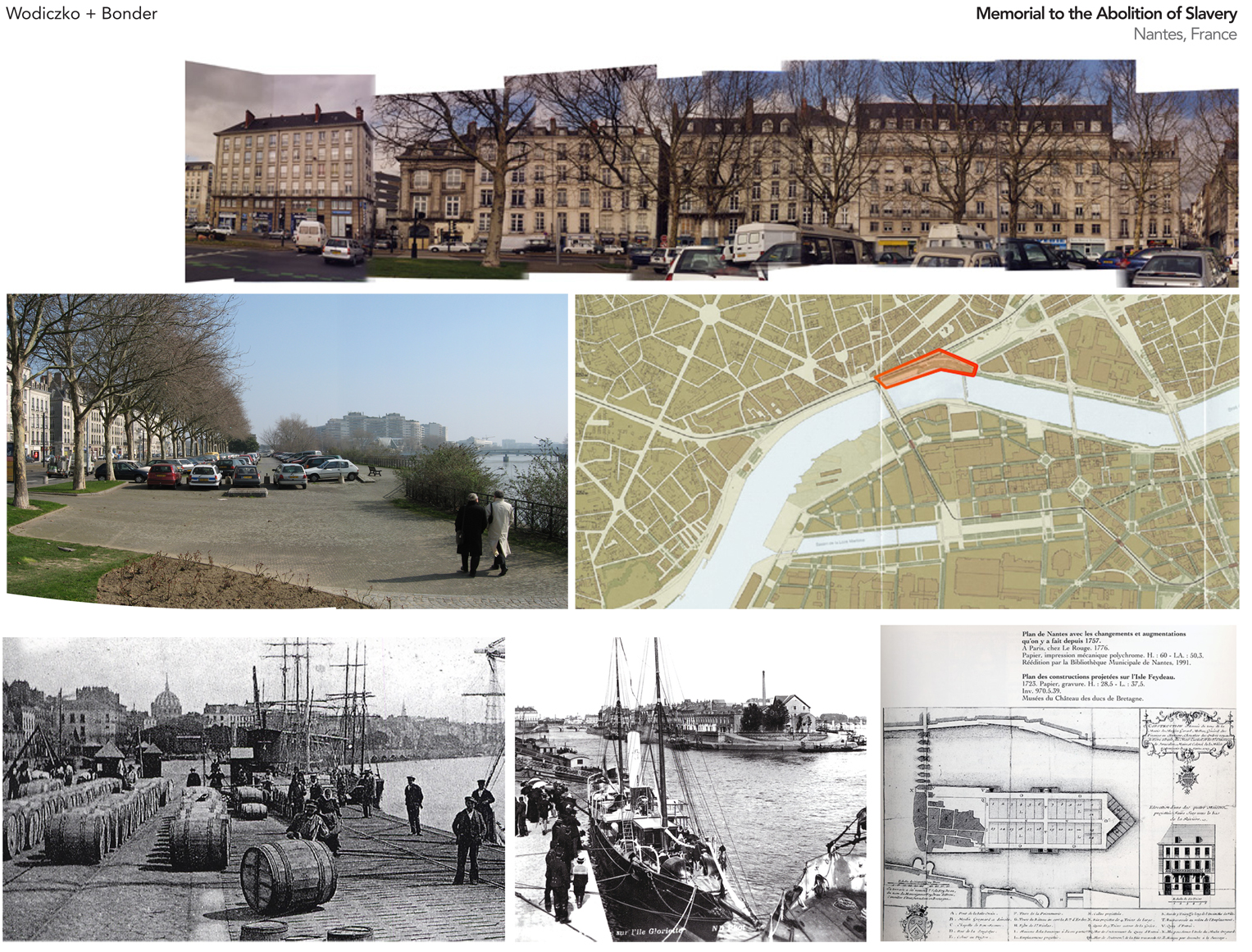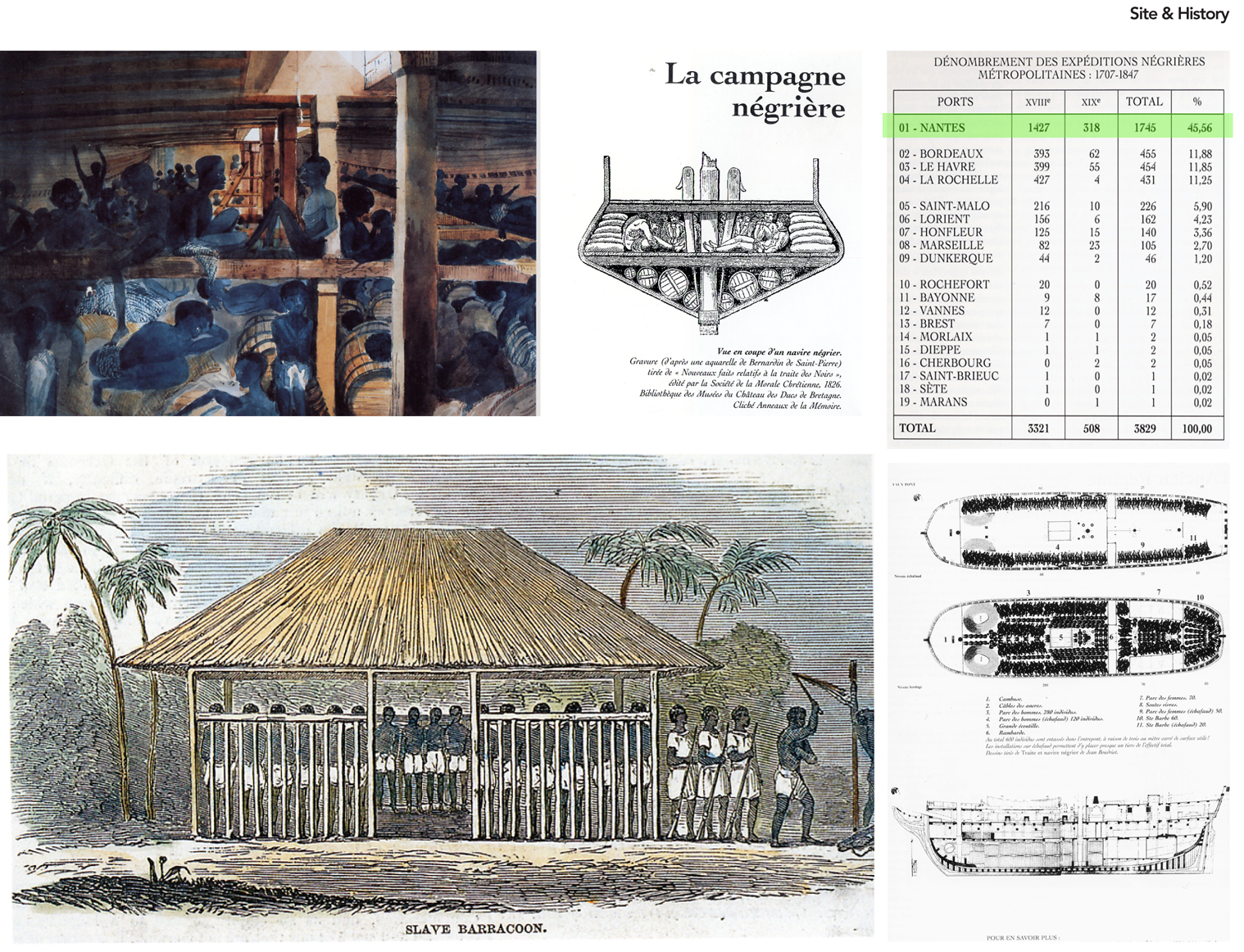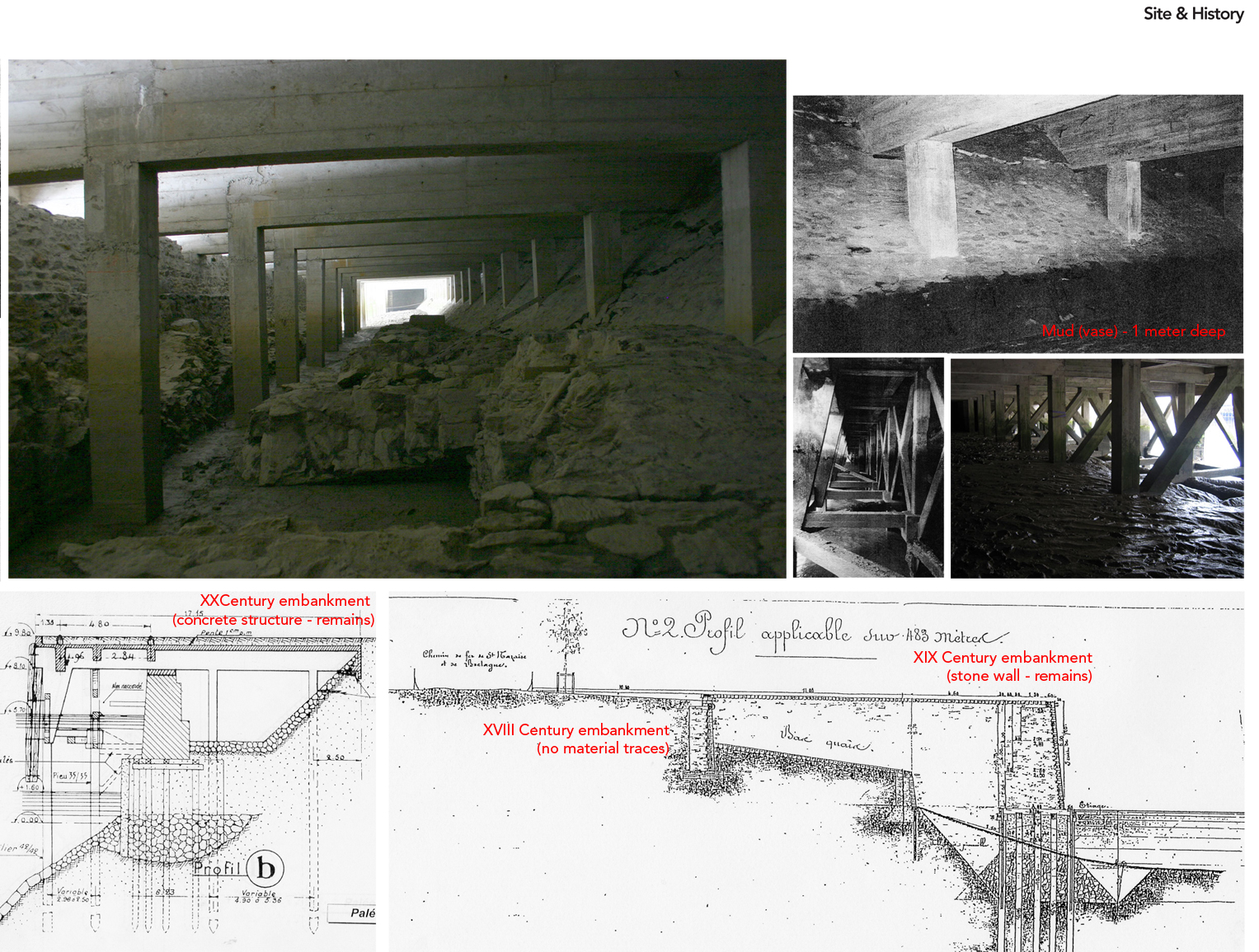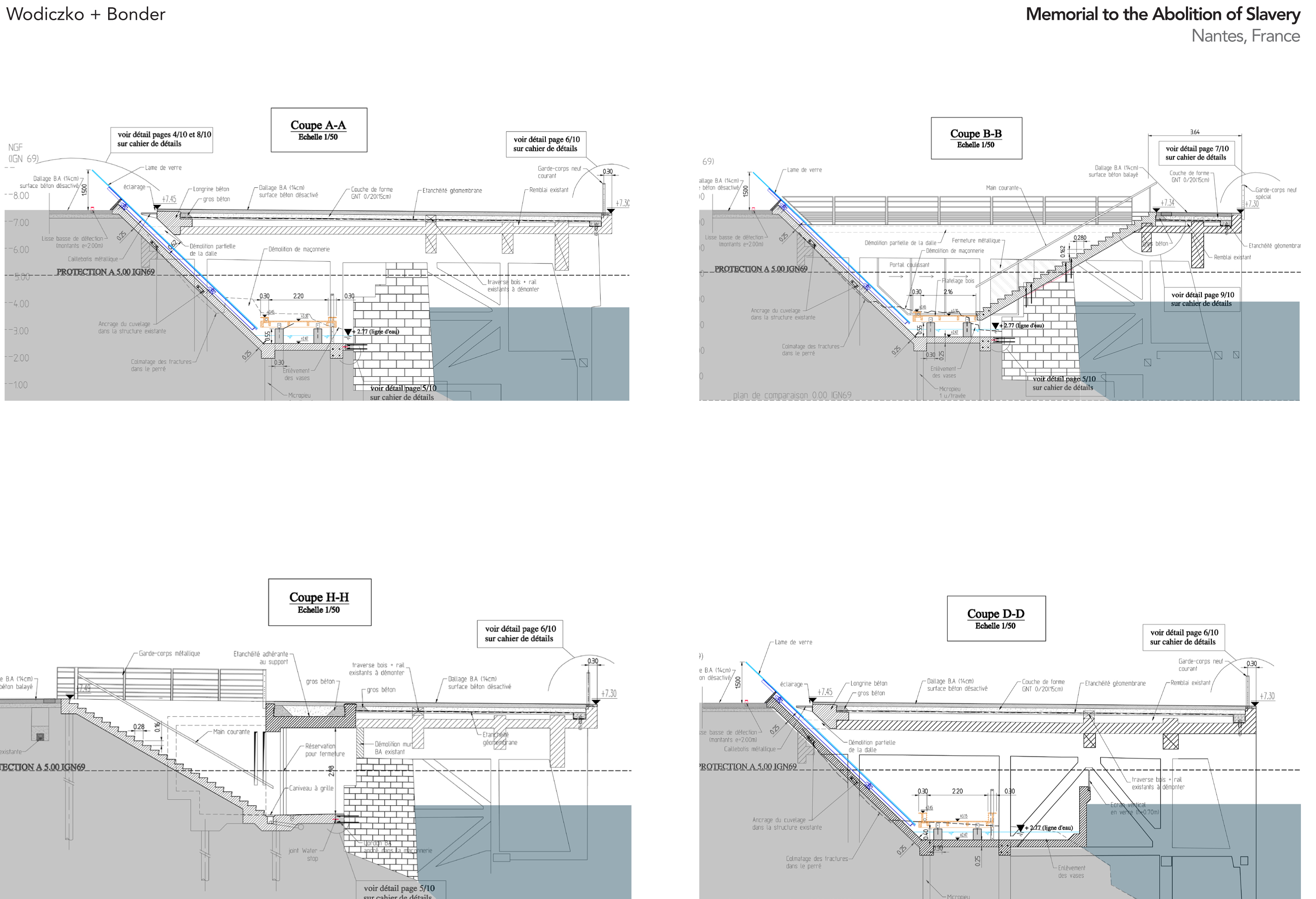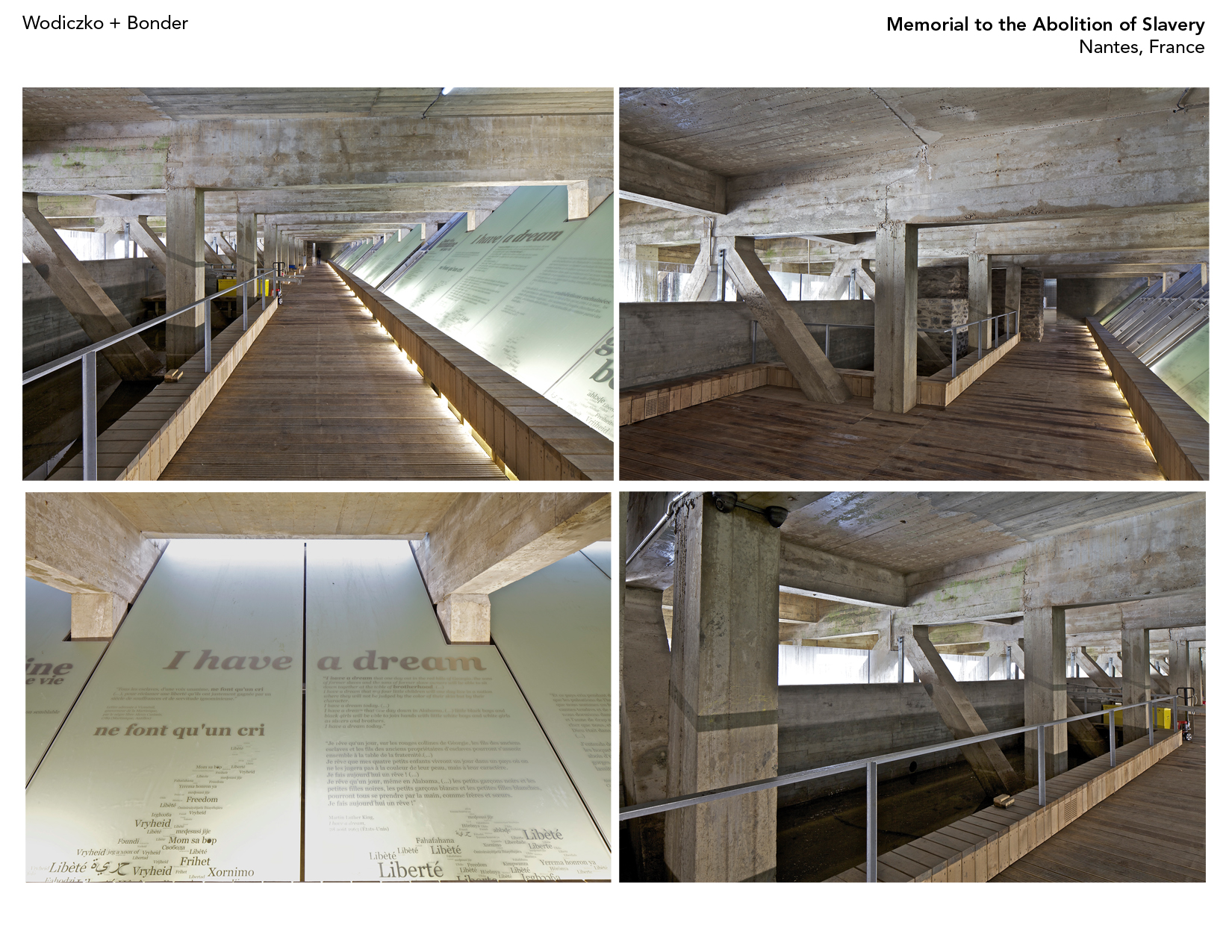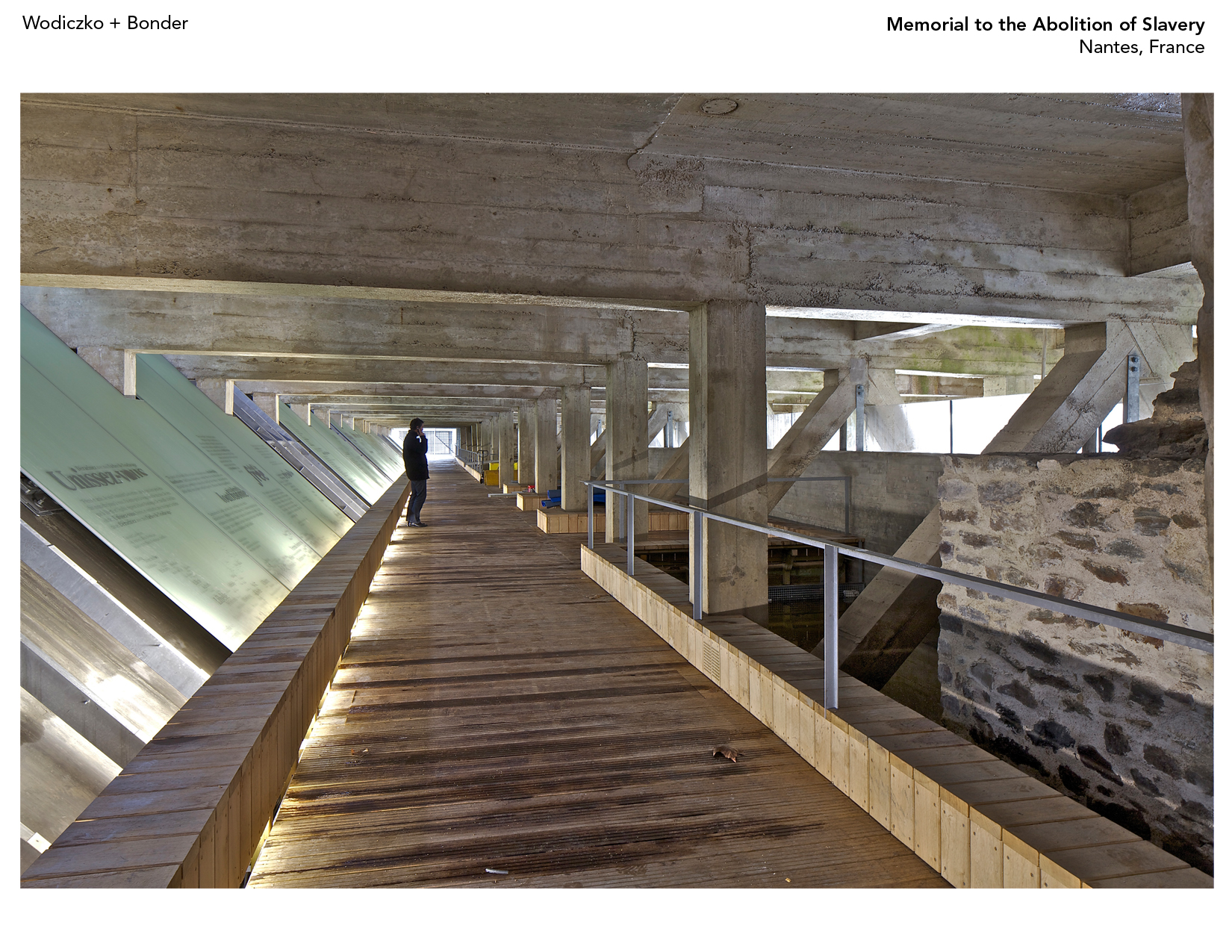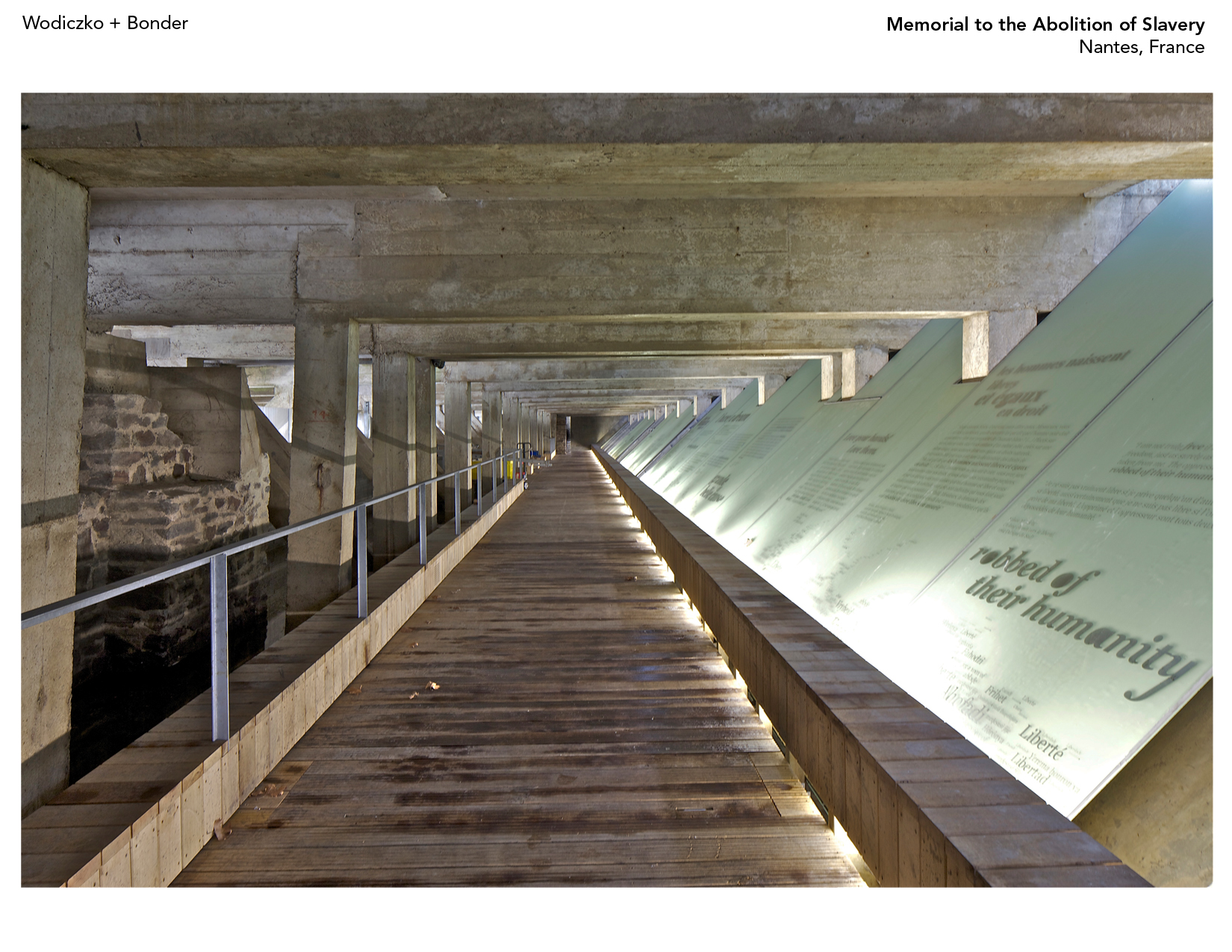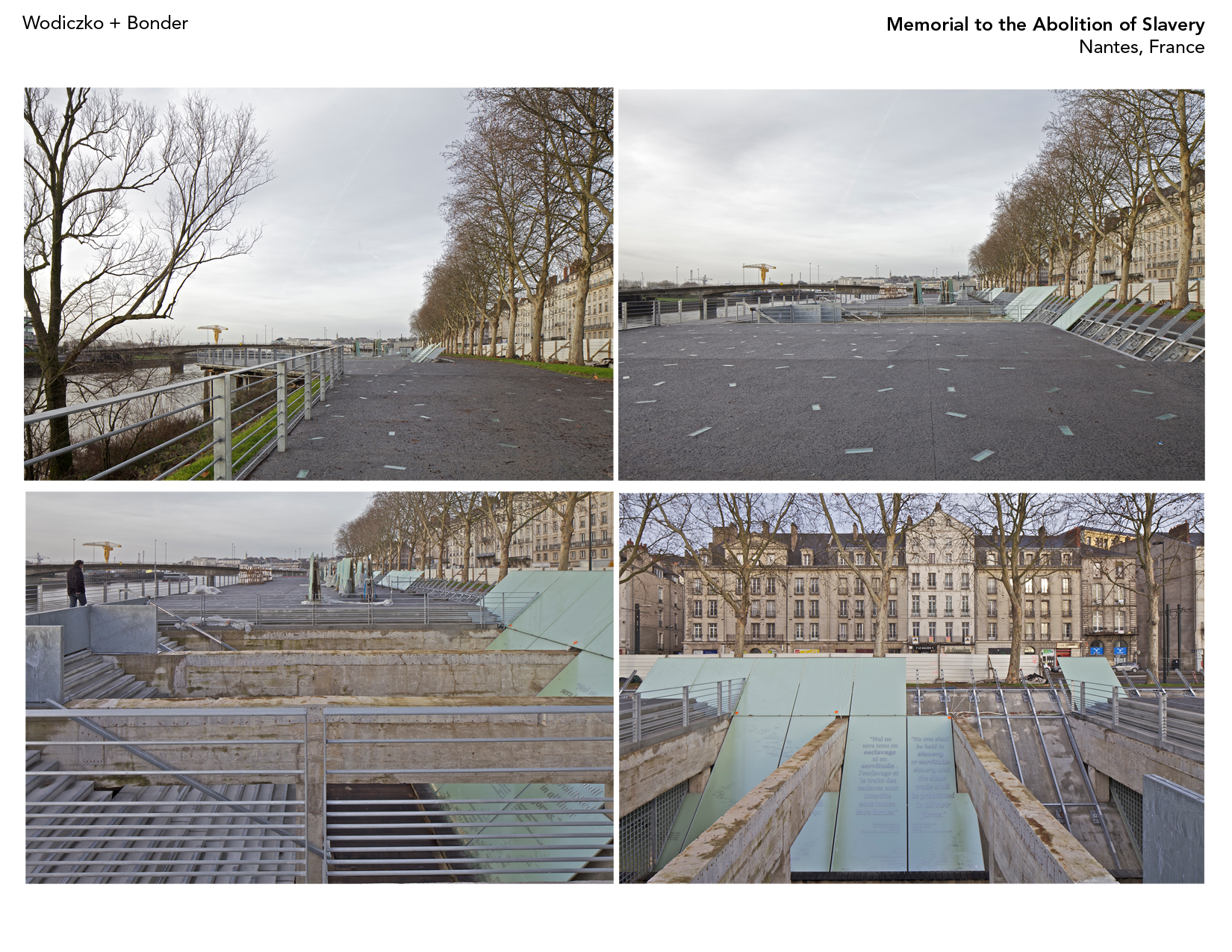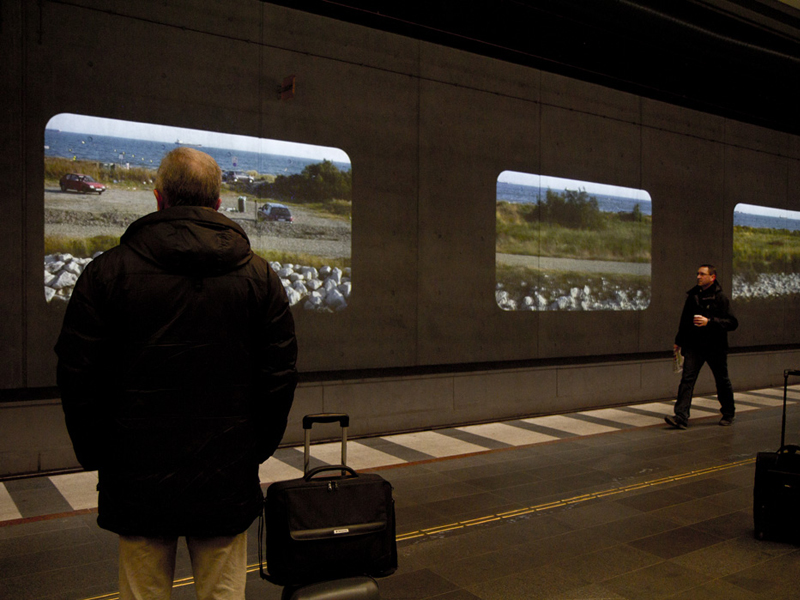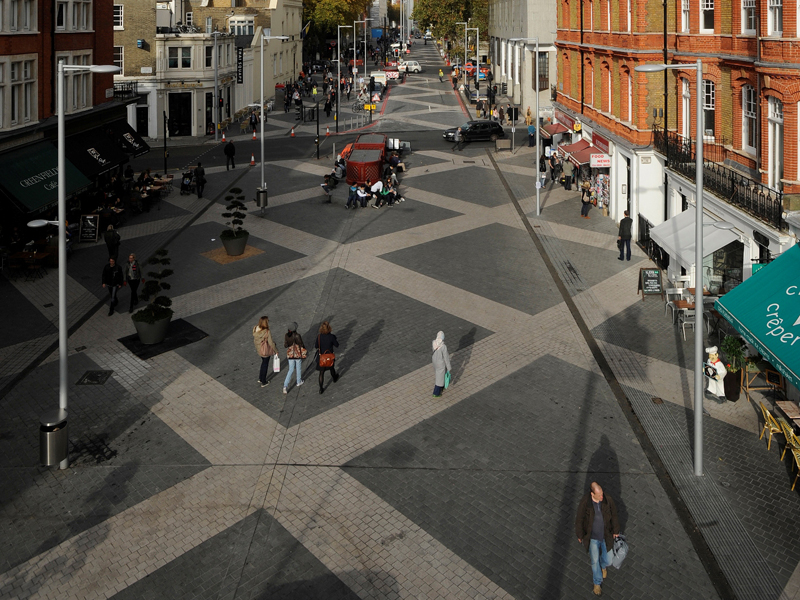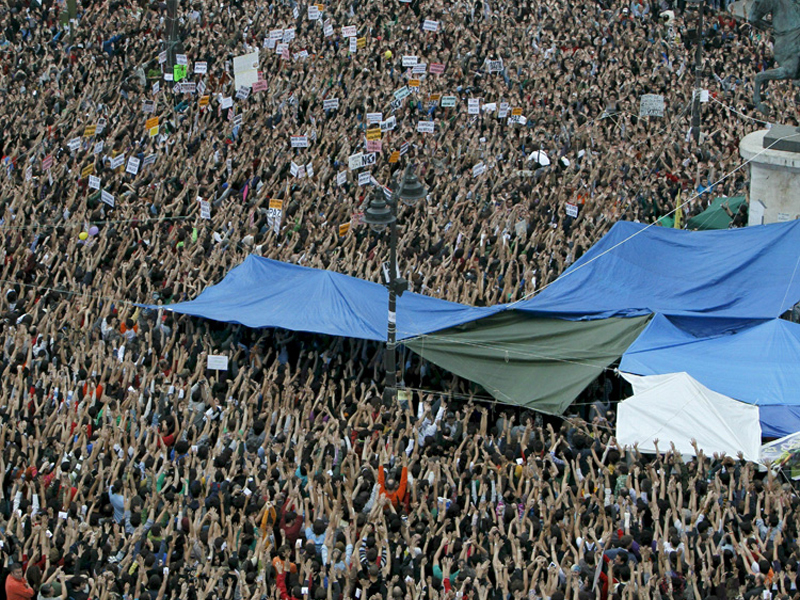Previous state
In the eighteenth century the river port of Nantes was a main departure point for French slave-trading expeditions. The ships took part in the “triangular trade” slave-trade system between the Atlantic coasts of Europe, Africa and the Caribbean or American colonies. A good part of the city’s wealth derived from this cruel activity and is displayed in the sumptuous palaces constructed by families engaged in the trade.
The Quai de la Fosse, a wharf that occupies the right bank of the Loire between the Anne de Bretagne Bridge and the Victor Schoelcher footbridge was the setting of the port’s main activity. Oblivious to the views over the river, people used its surface as an open-air car park until recently. Its surface concealed a triangular-shaped structure of reinforced concrete resting on top of an eighteenth-century quay wall. The rising waters of the river meant that the space was partially submerged every day.
Aim of the intervention
The city turned its back on the memory of its shameful relationship with the slave trade until 1990 when an exhibition brought it explicitly to public attention. Some years later, the City Council earmarked seven and a half million euros for the transformation of the Quai de la Fosse into a space devoted to reflection on this history of slavery, commemoration of its abolition and making known the ongoing struggles against present-day forms of slavery. The intervention also aimed to improve the city’s relationship with the river.
Description
The open-air car park has been transformed into a riverside walk of some three hundred and fifty metres in length. Encrusted in its paving are plaques with inscriptions of the names of the almost two thousand expeditions of French slavers, with the dates of departure and the ports from which they set sail, half of them from Nantes. All of them bear the words “Navire Négrier” (Slave Ship) as an explicit reminder of the purpose of these expeditions.
The ground-level path offers access to a lower level where the pre-existing triangular-shaped spaces have been protected from rising river waters by means of a waterproof concrete basin. The construction of the space required complex engineering work which had to be programmed according to the rising and falling river waters. The resulting space is a gallery of trapezoidal section as a result of the meeting of the angled portals of the structure, the wall of the eighteenth-century embankment and the slab of the upper esplanade. The form of this section coincidentally evokes the hold of a slave ship, a cramped effect that is reinforced by the narrowness and partially submerged position of the gallery.
This meaningful coincidence coherently reinforces the sense of the Memorial gallery, which has an information area, an exhibition space devoted to the history of slave trading and the different struggles against slavery until the present day. The museum facilities are complemented with the exhibition rooms of the recently refurbished Château des Ducs de Bratagne and organised tours through the city showing, among other features the luxurious residences of the old slave traders.
Assessment
With this intervention, Nantes has been endowed with a public space imbued with ethical sense which sheds light on one of the most reprehensible periods of its past. The transformative ambition of a work that offers the city a new riverside walk transcends physical dimensions in order to attend to the political dimension. The significant coincidence of architectural form and content goes beyond a mere act of constriction to adopt a civic commitment to the defence of human rights.
David Bravo Bordas, architect
[Last update: 13/12/2021]


